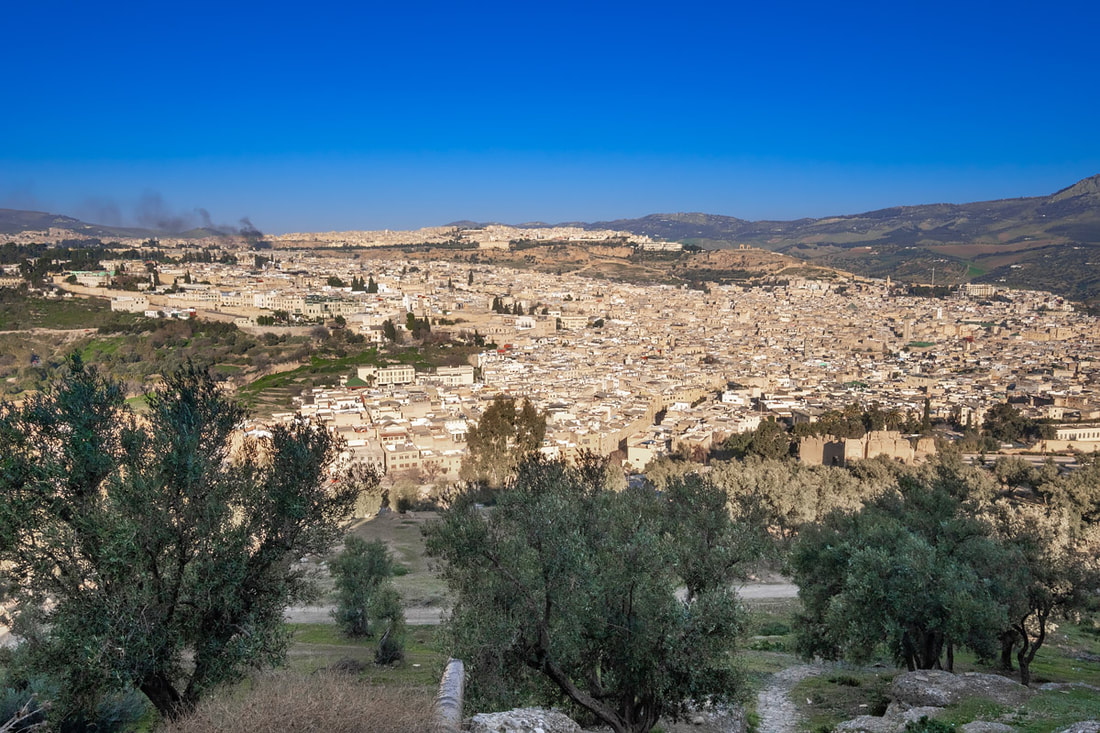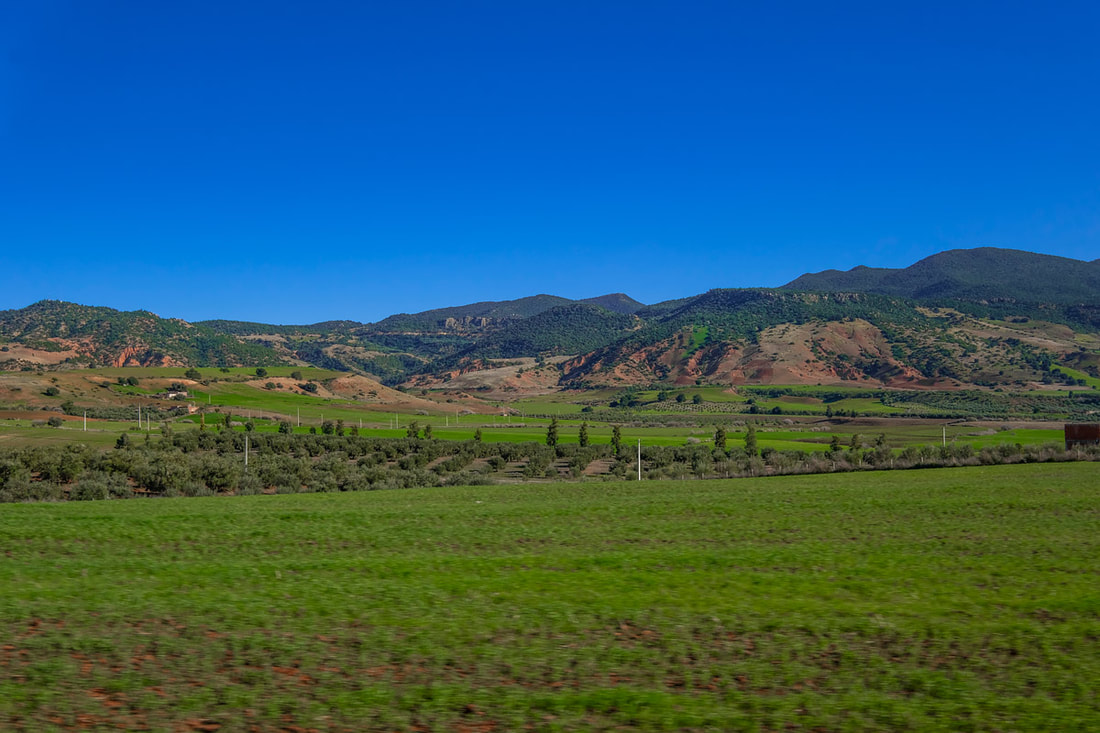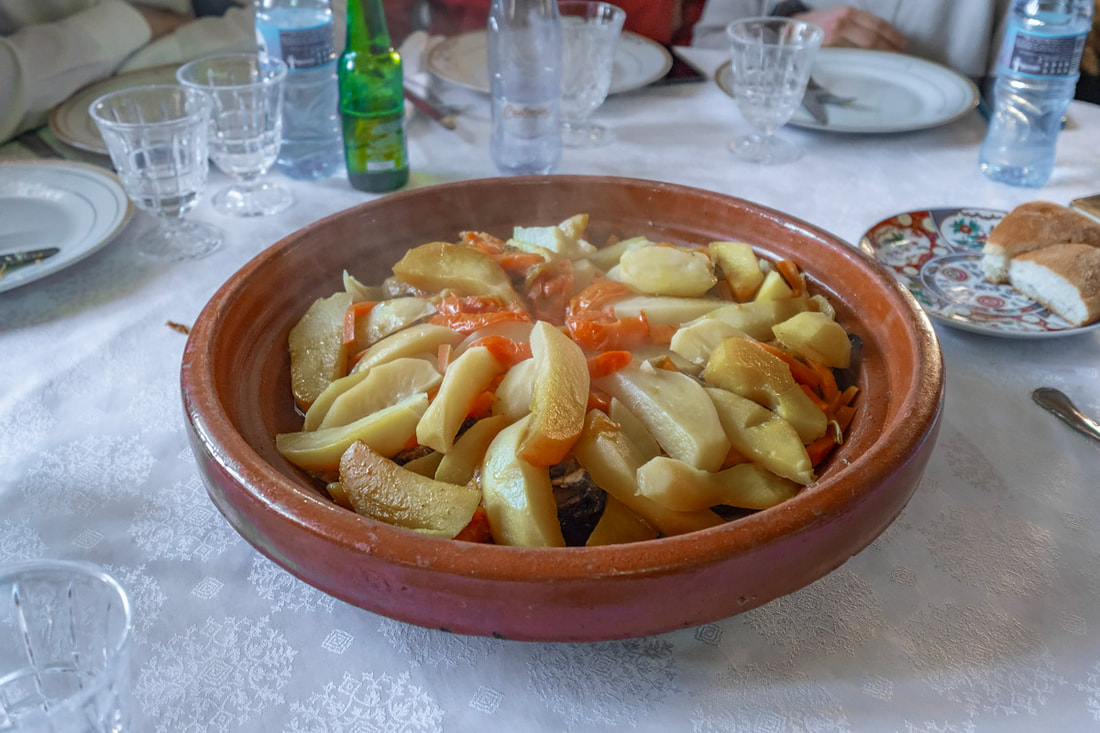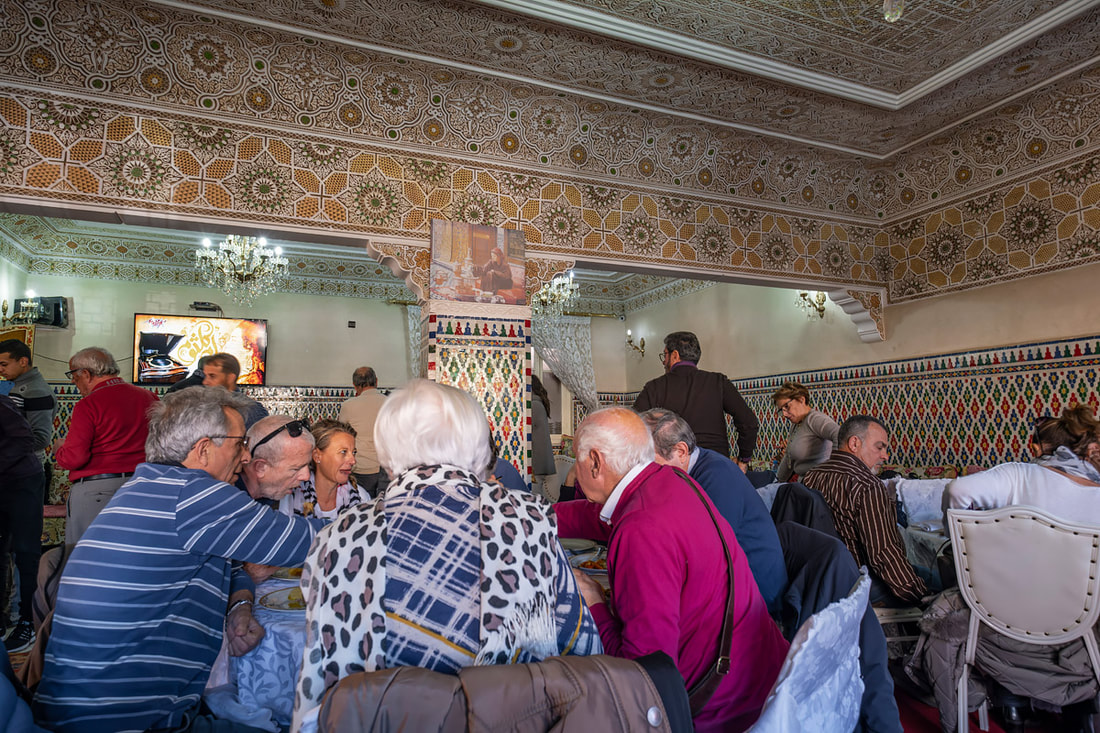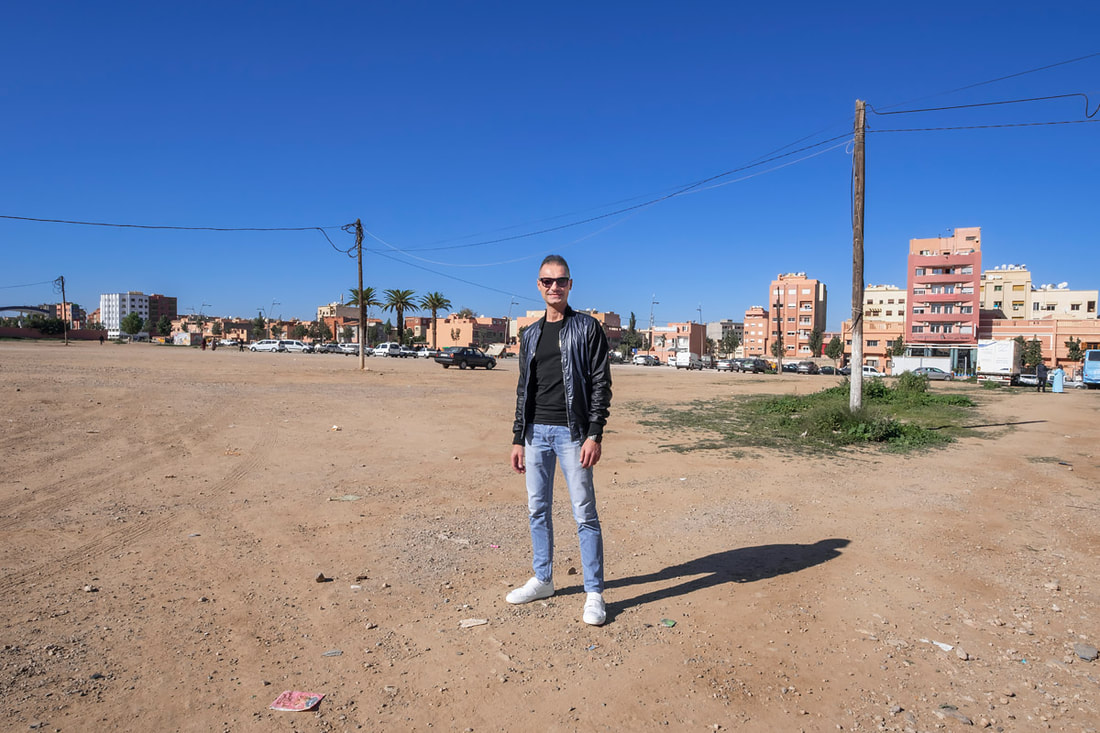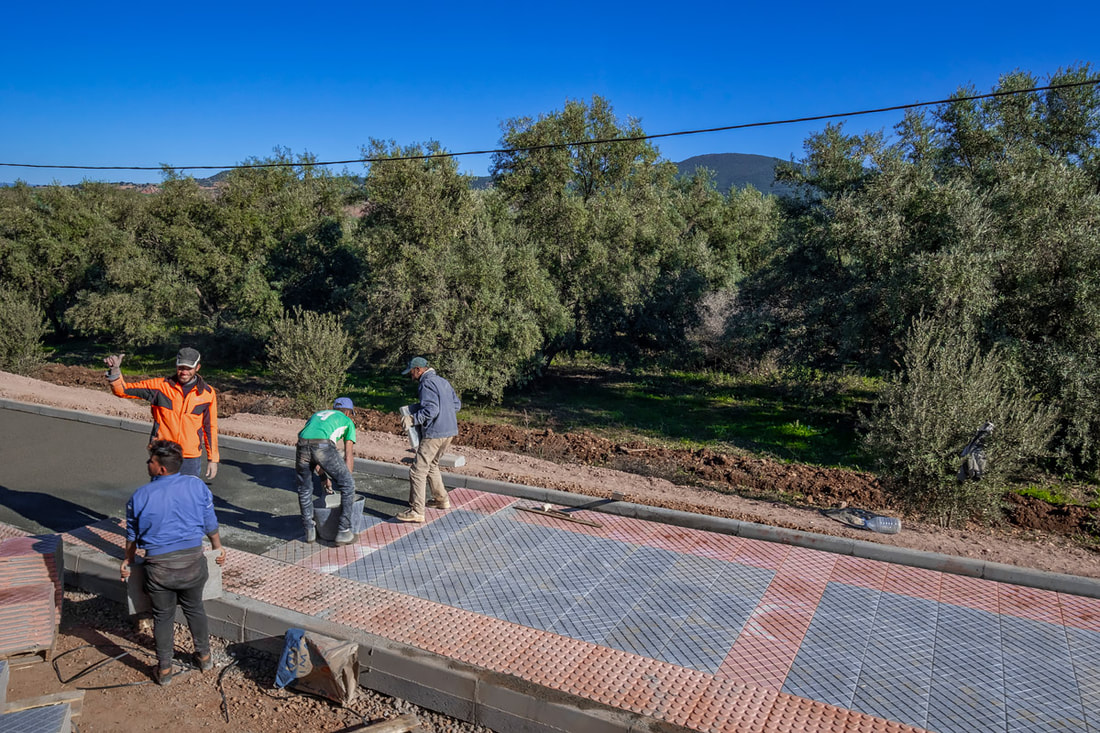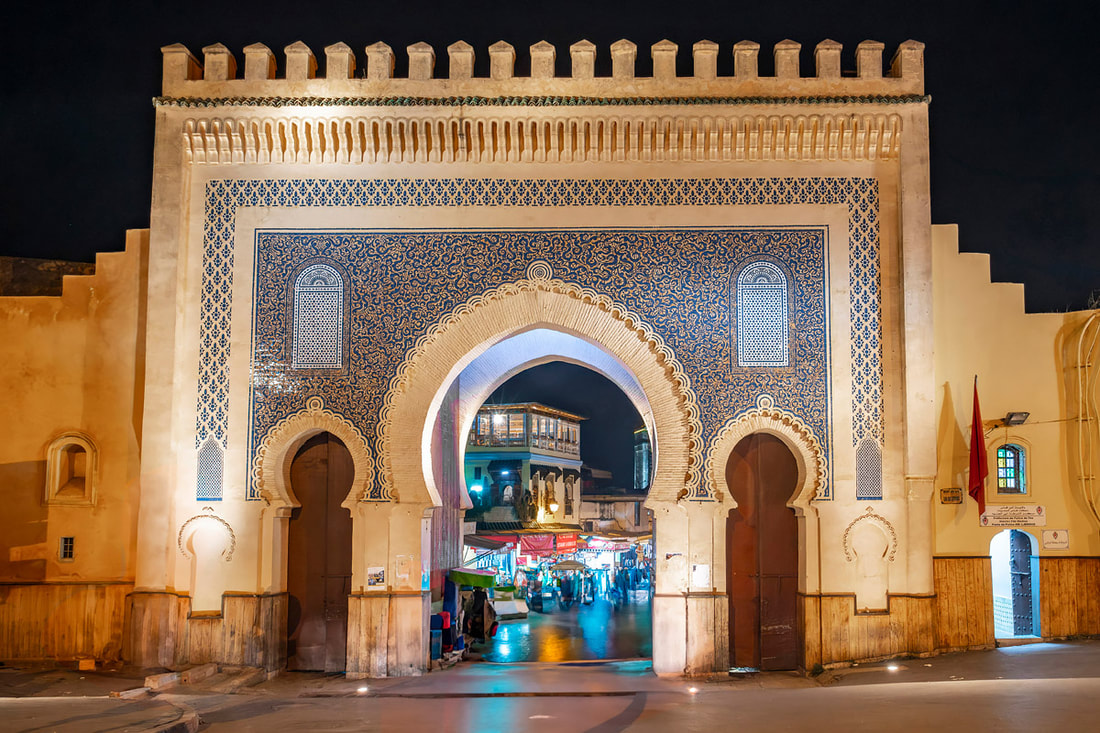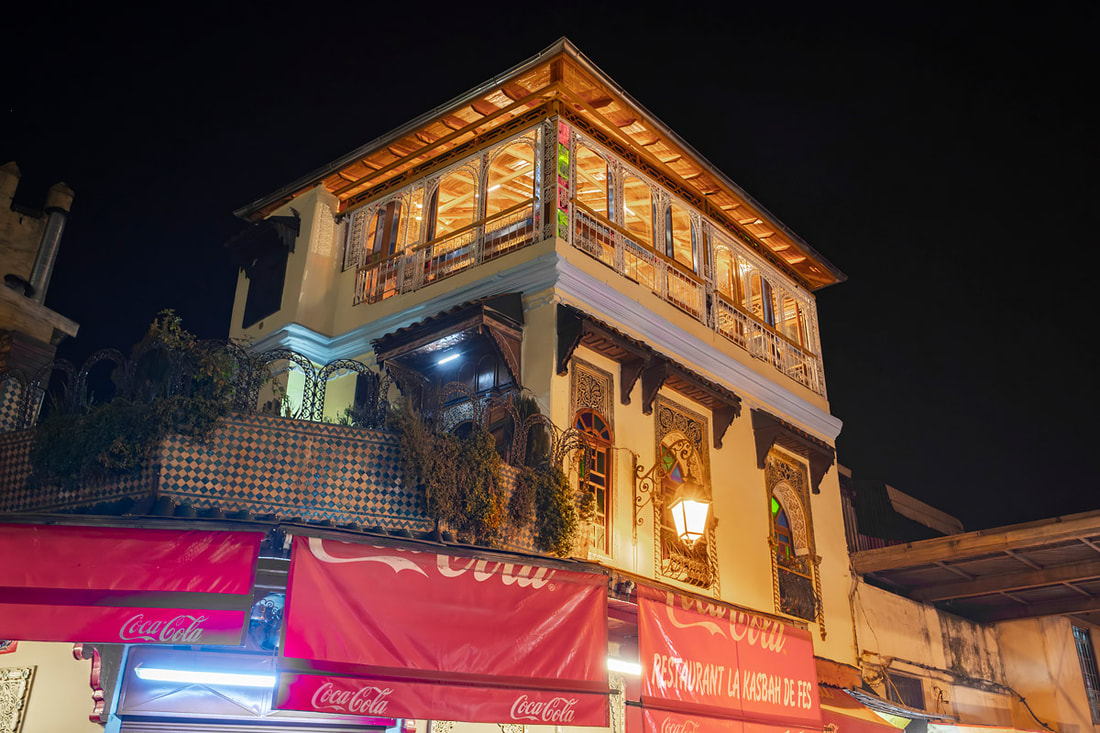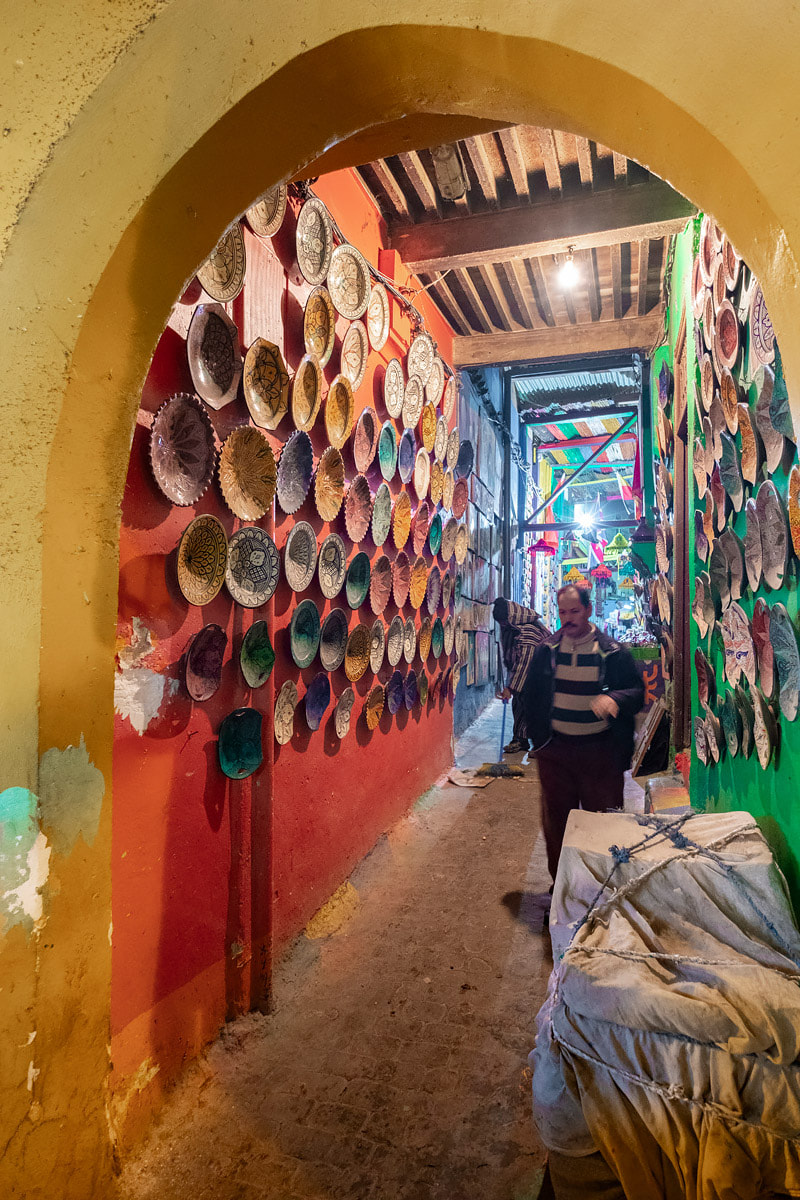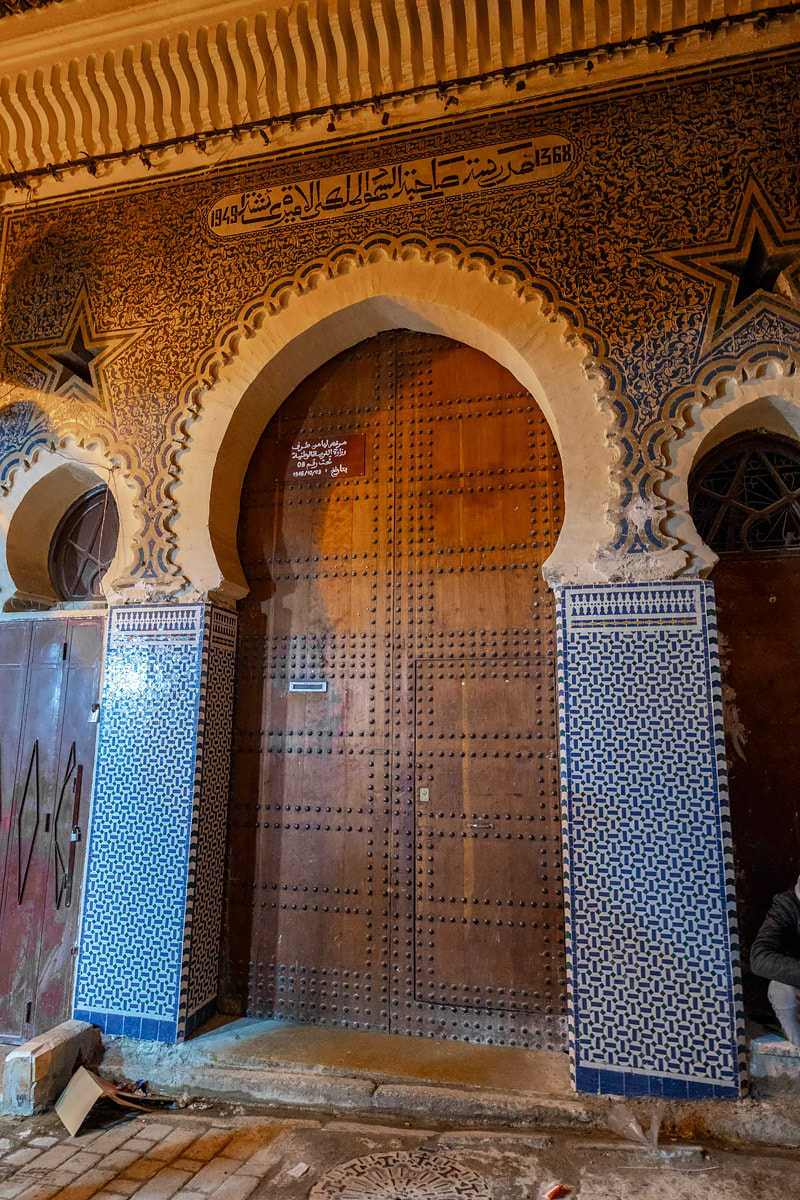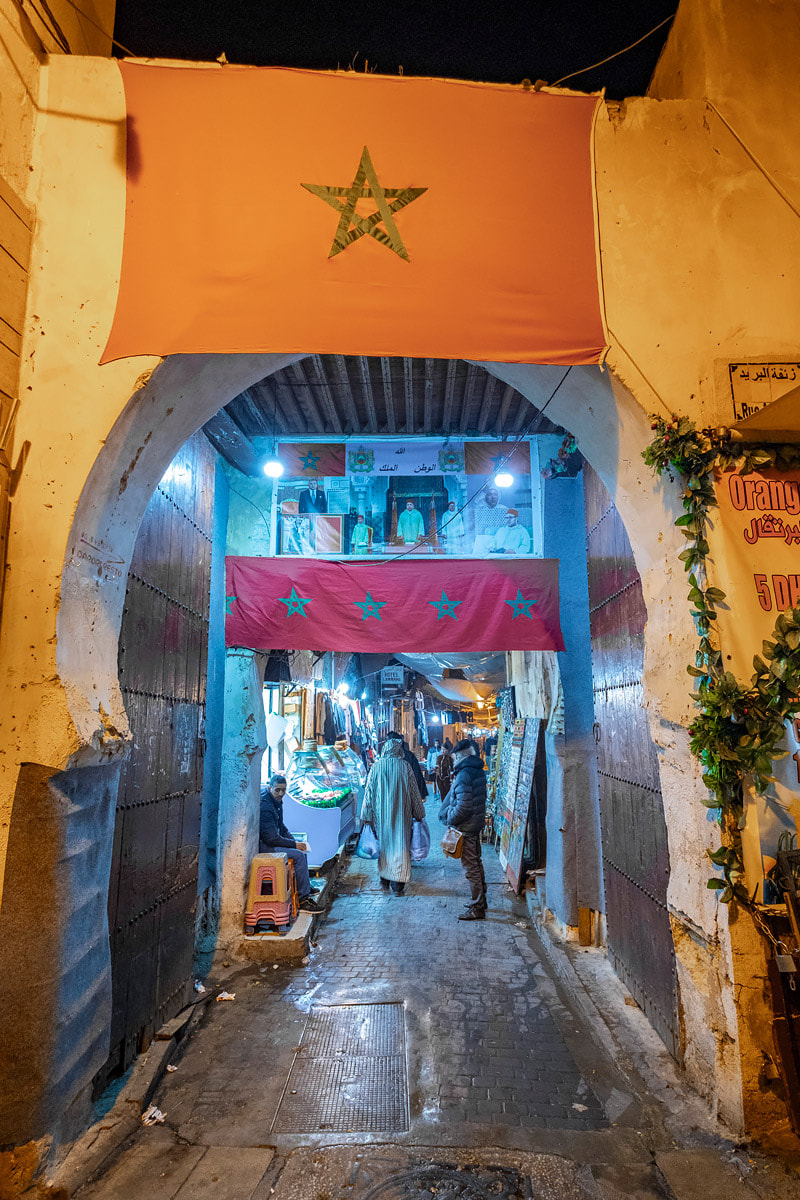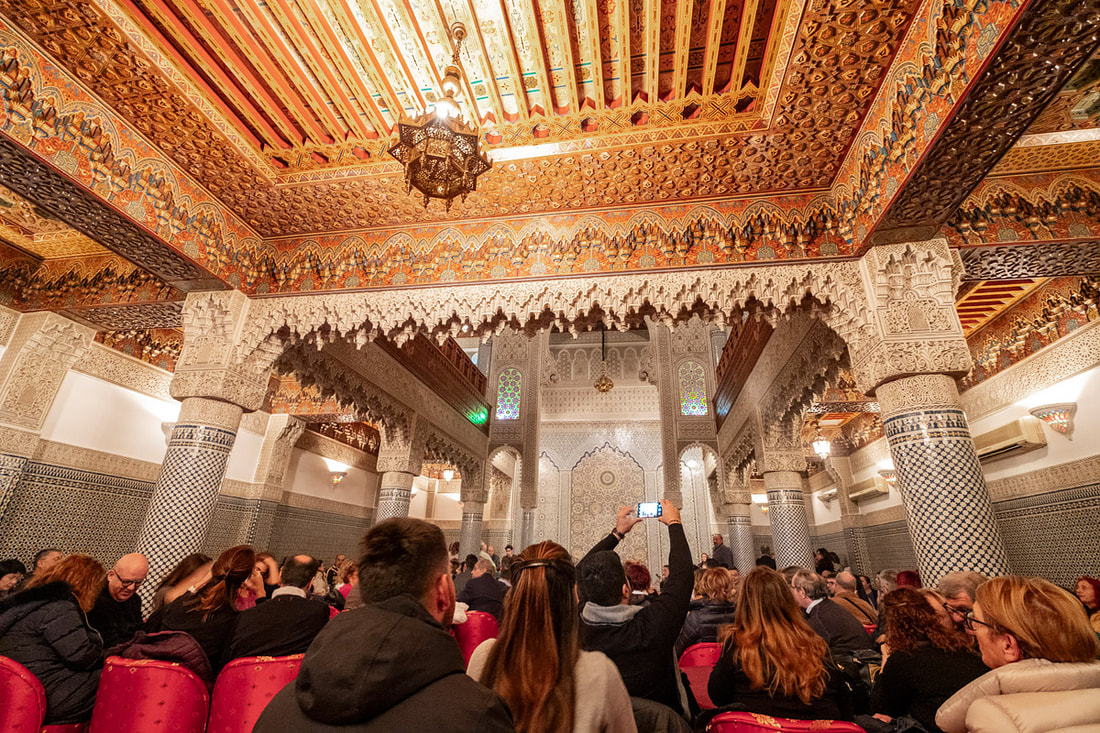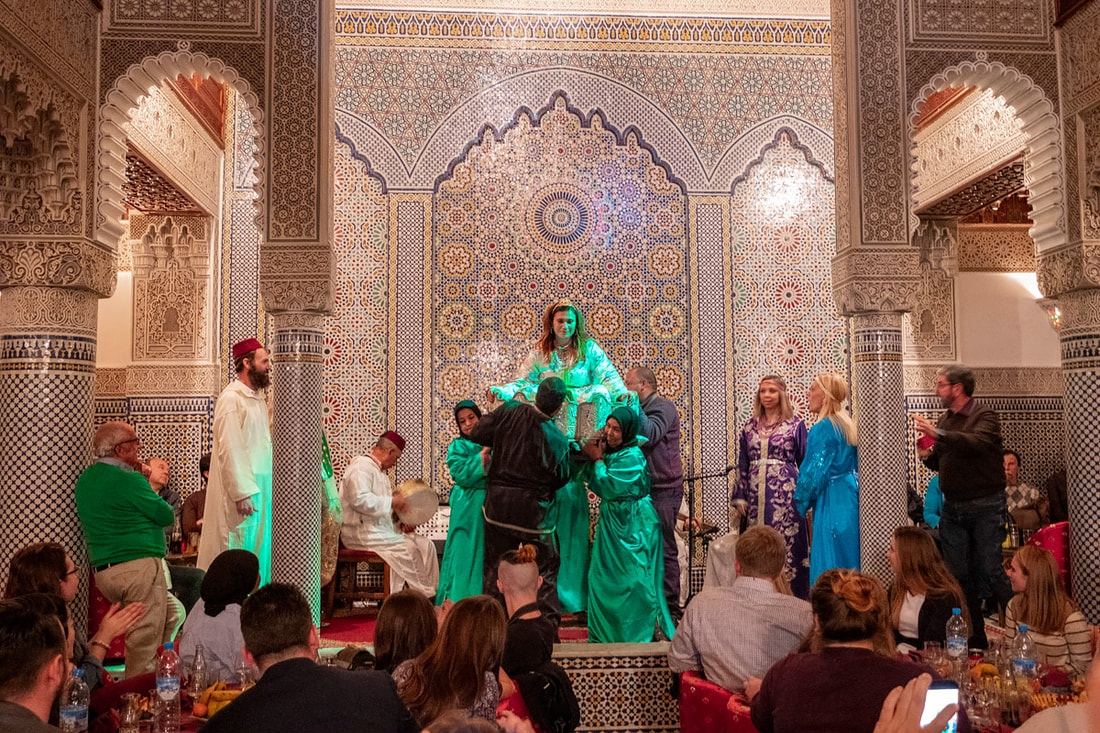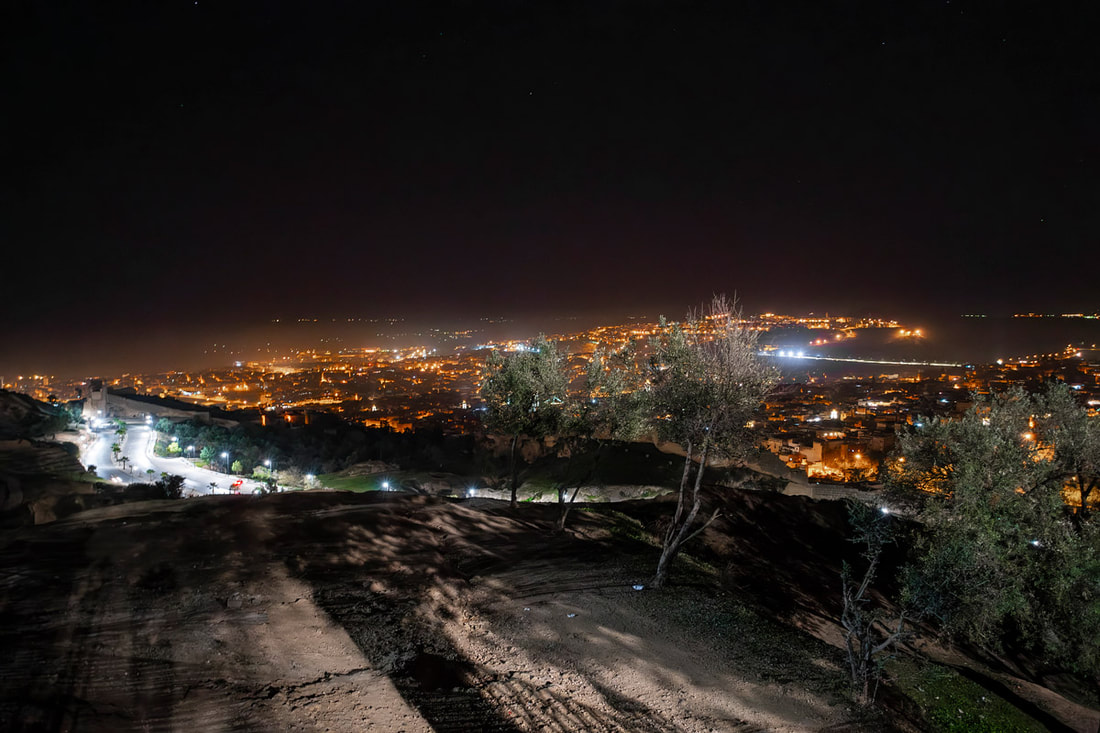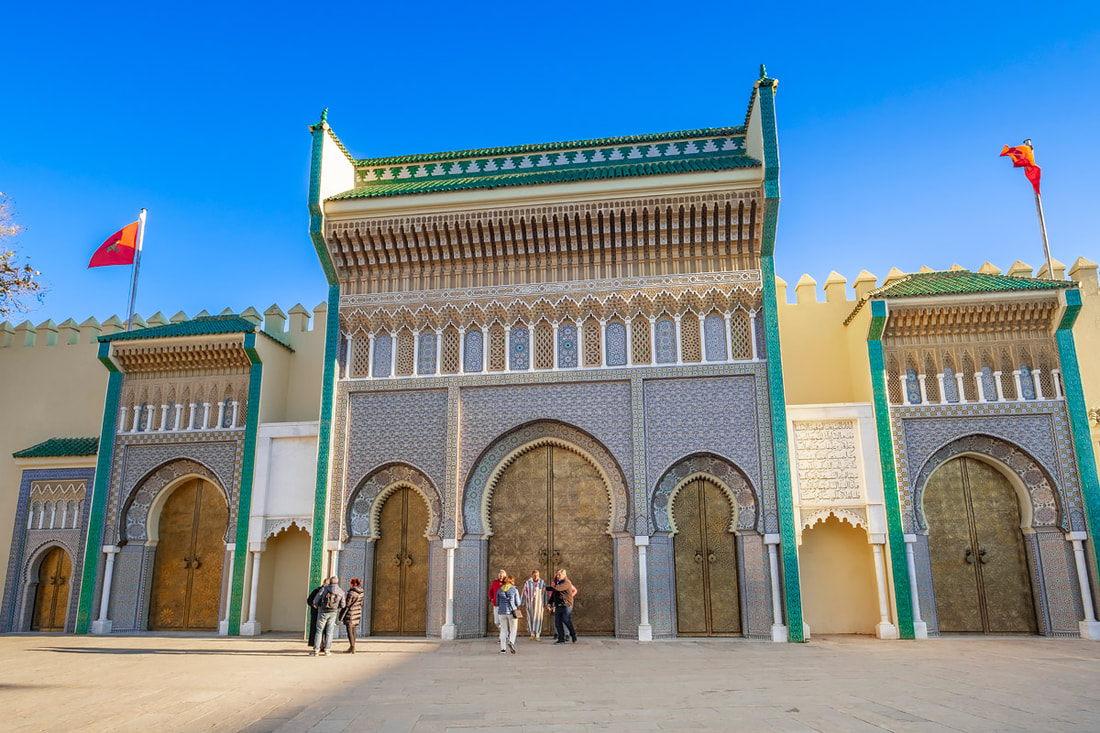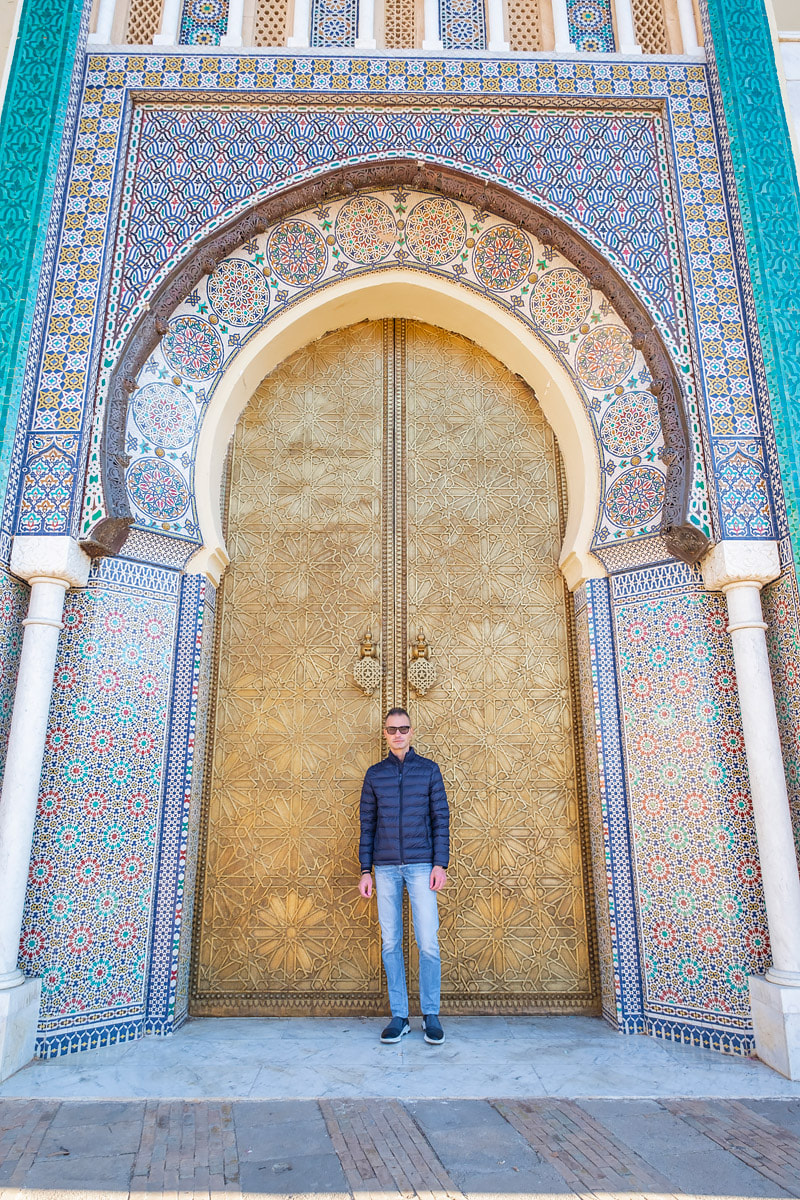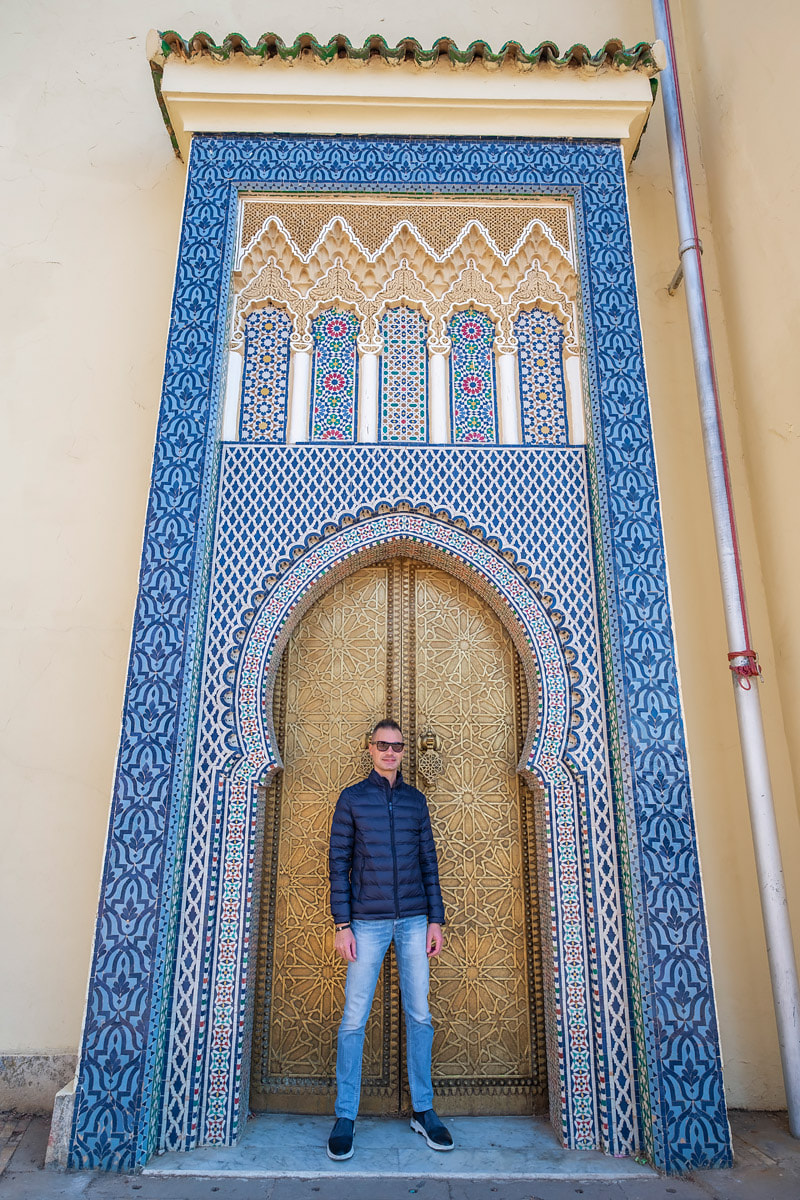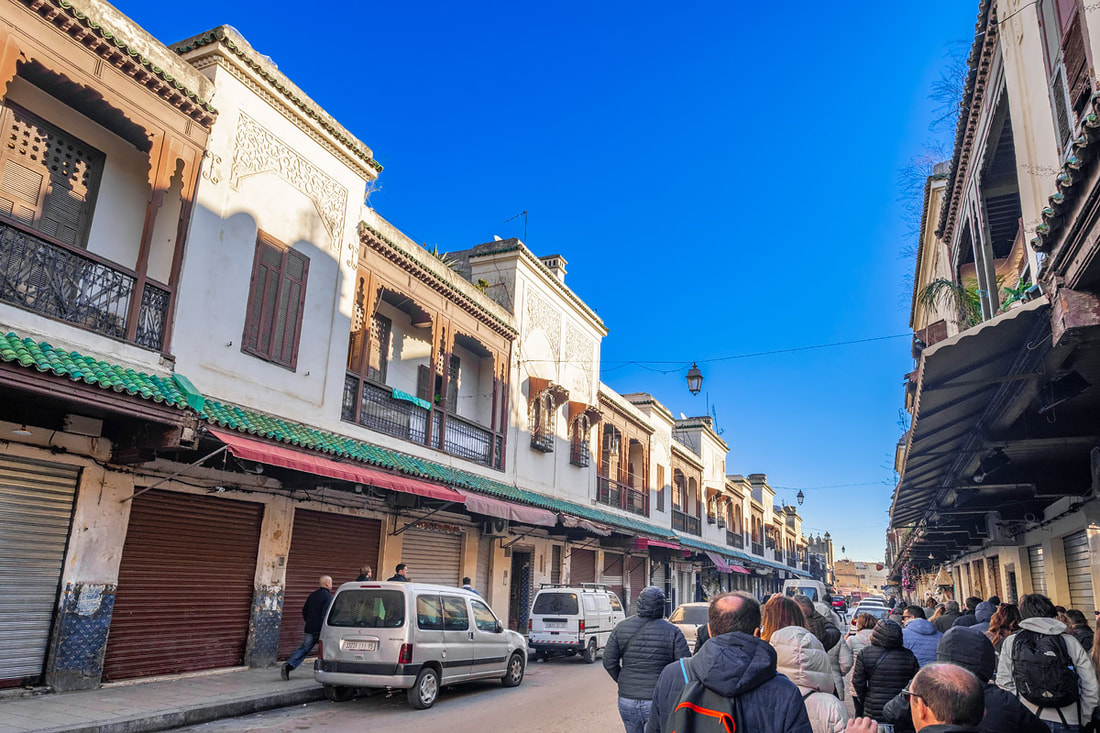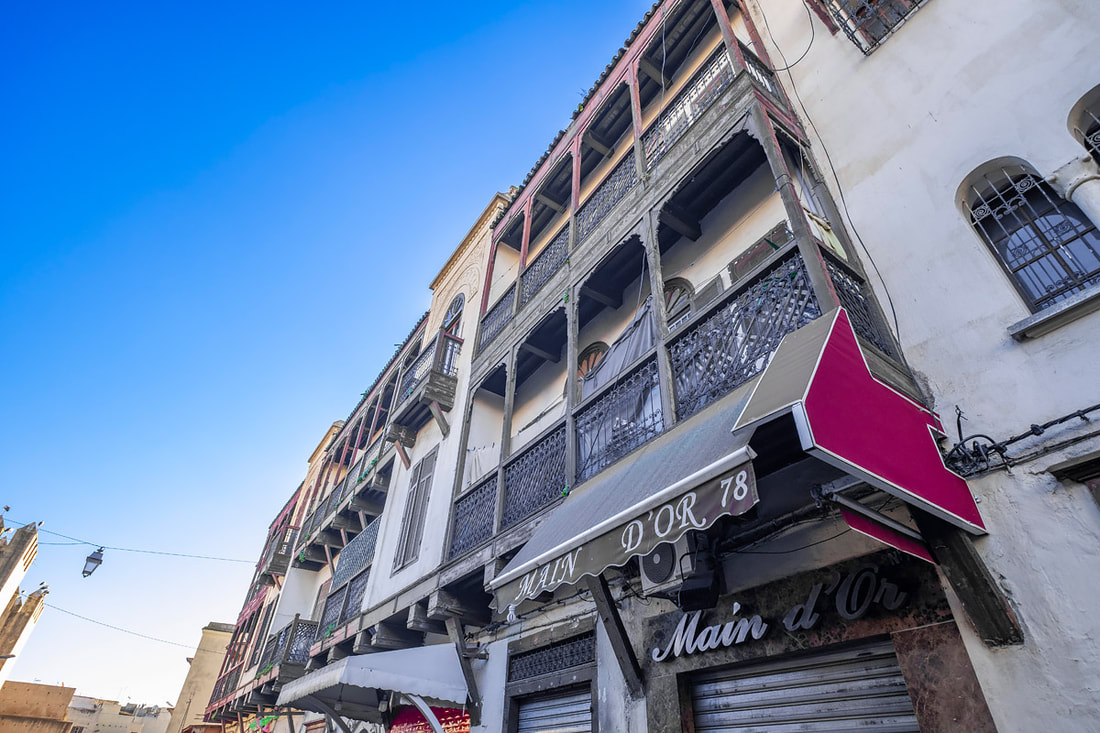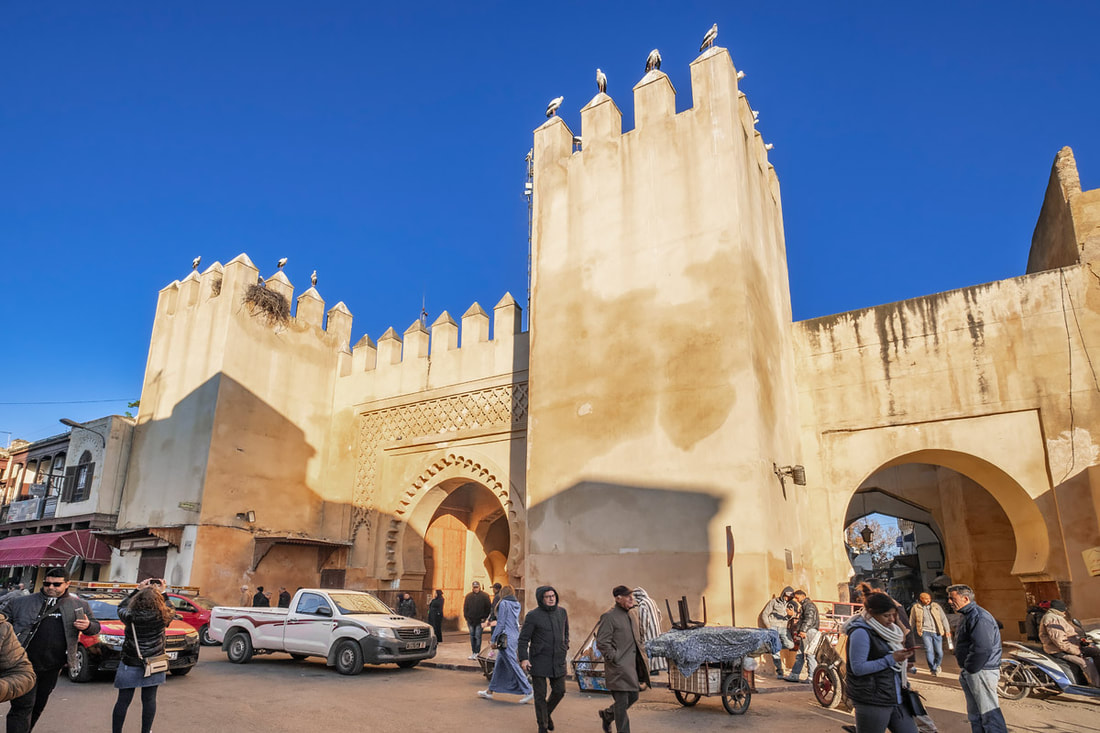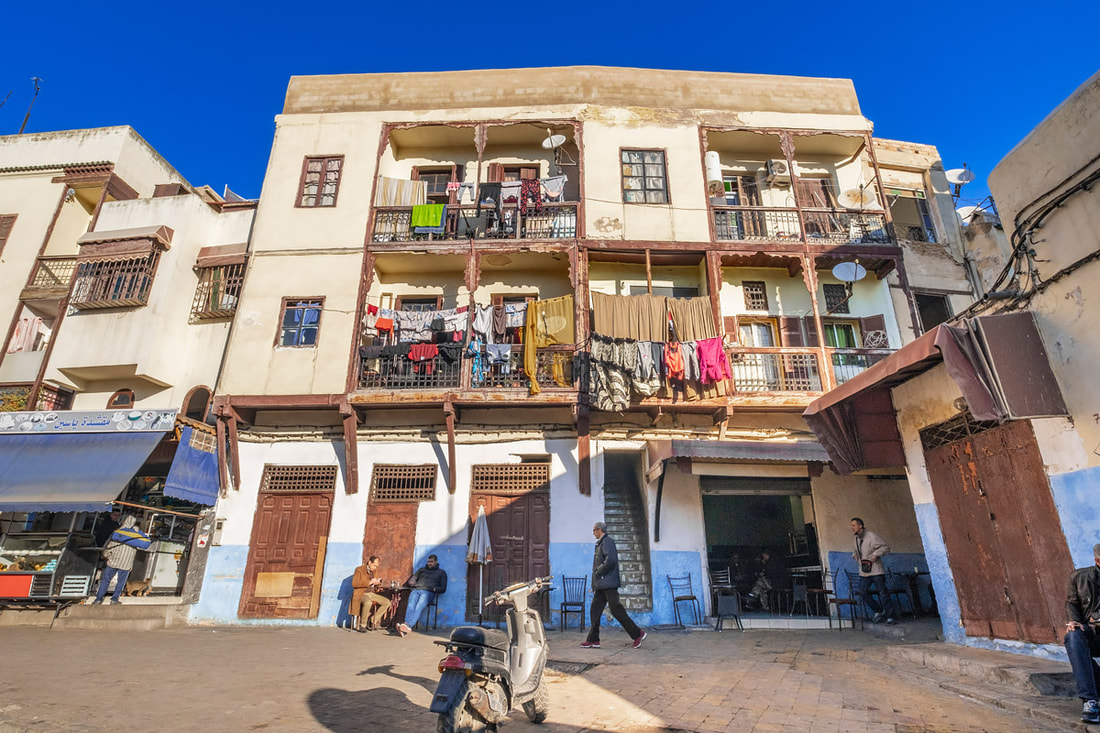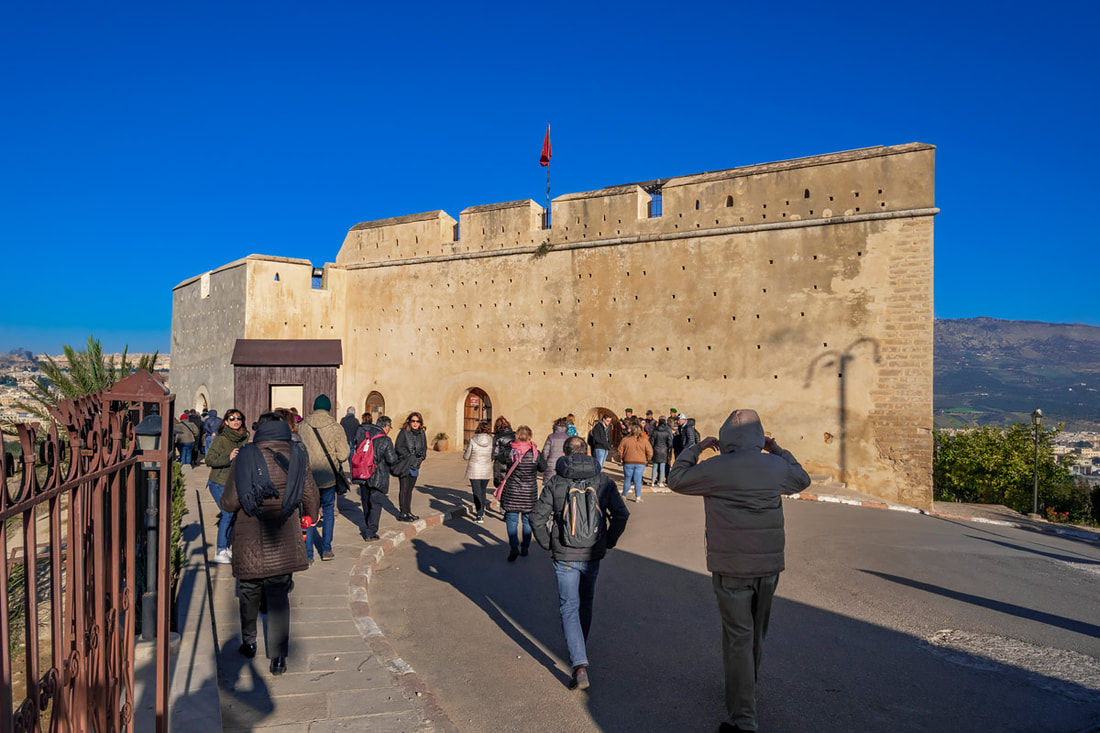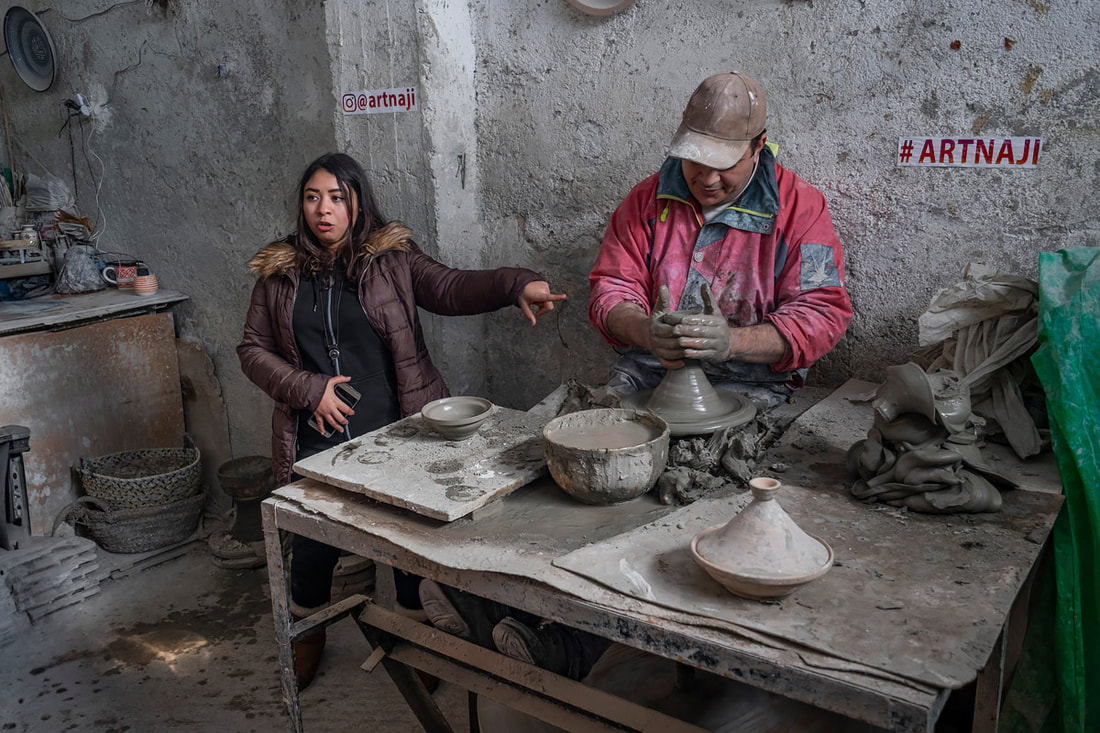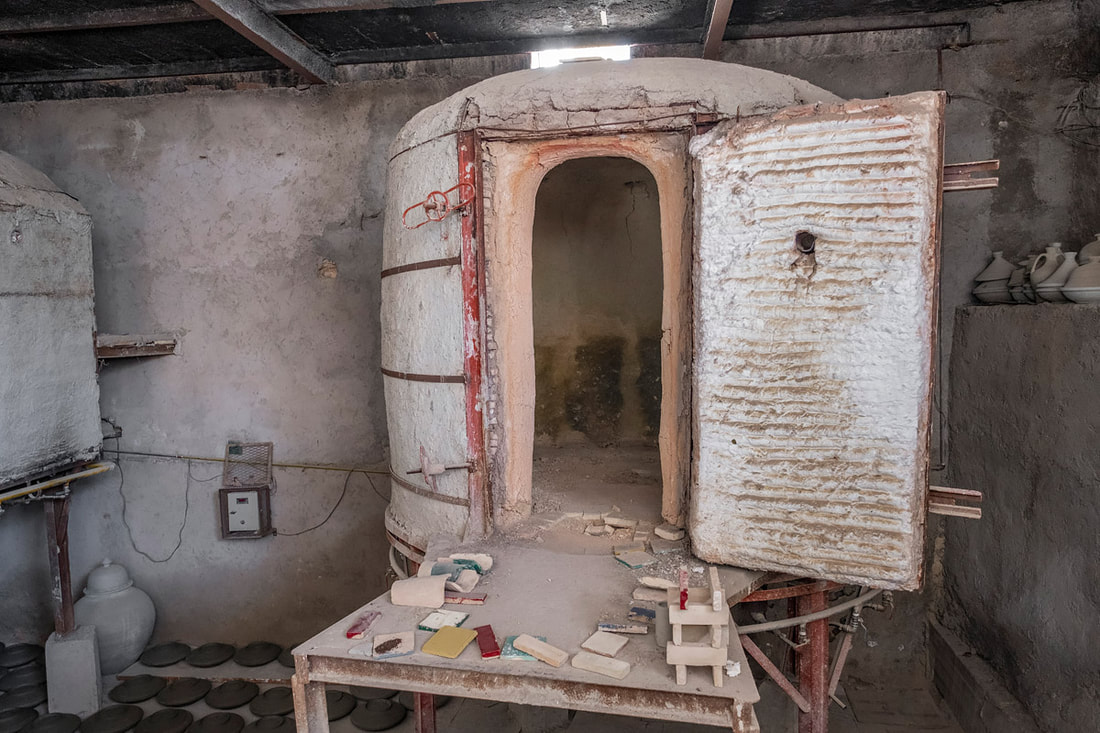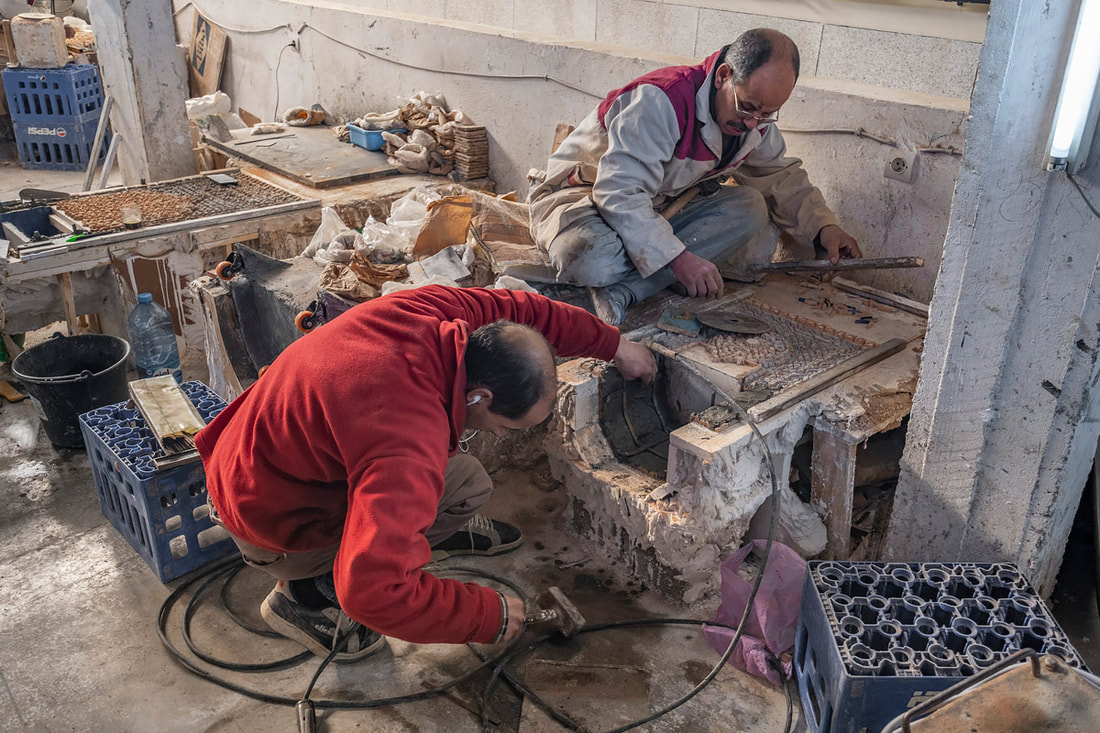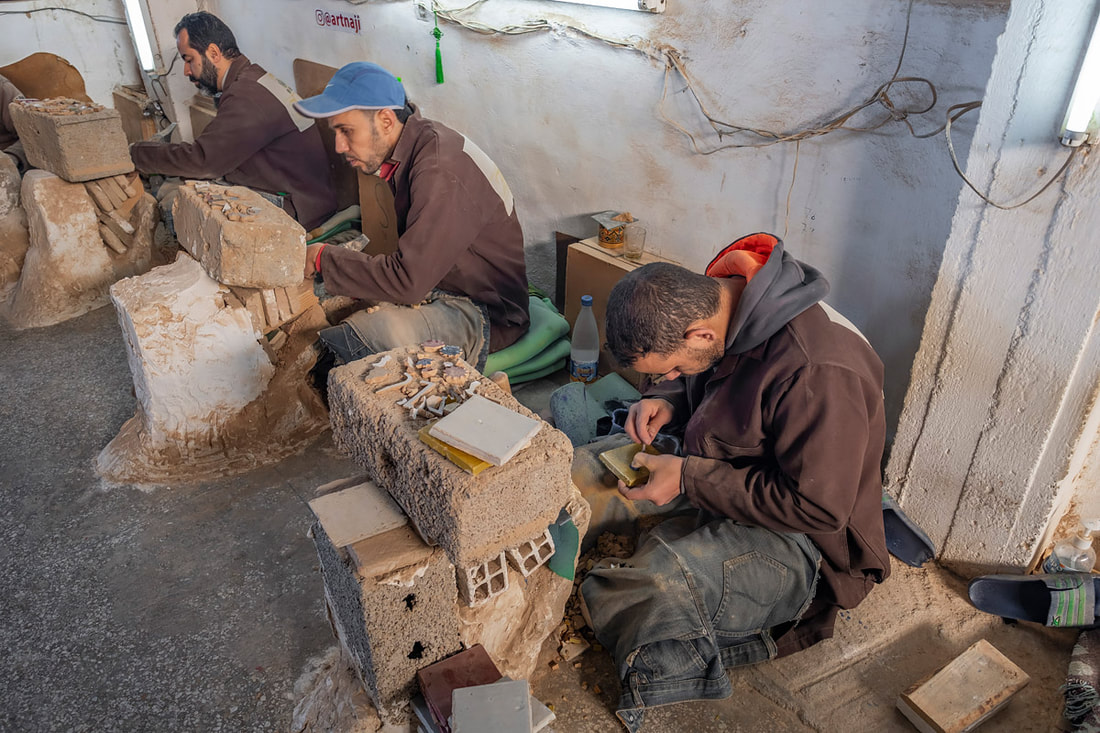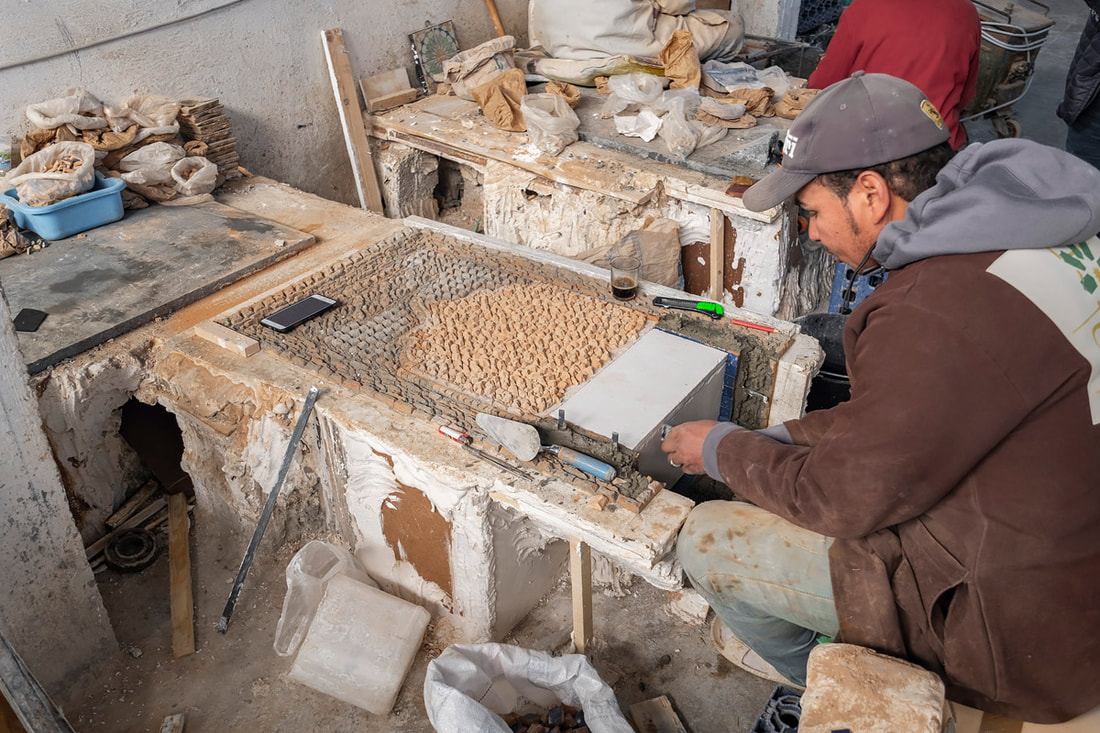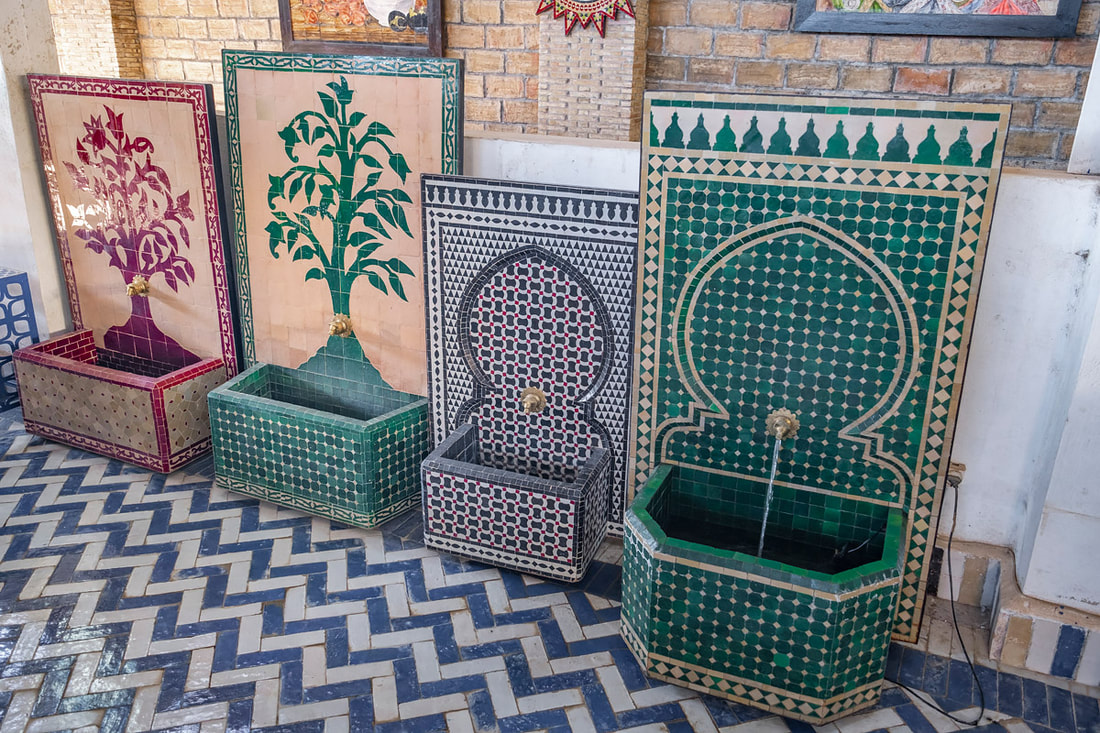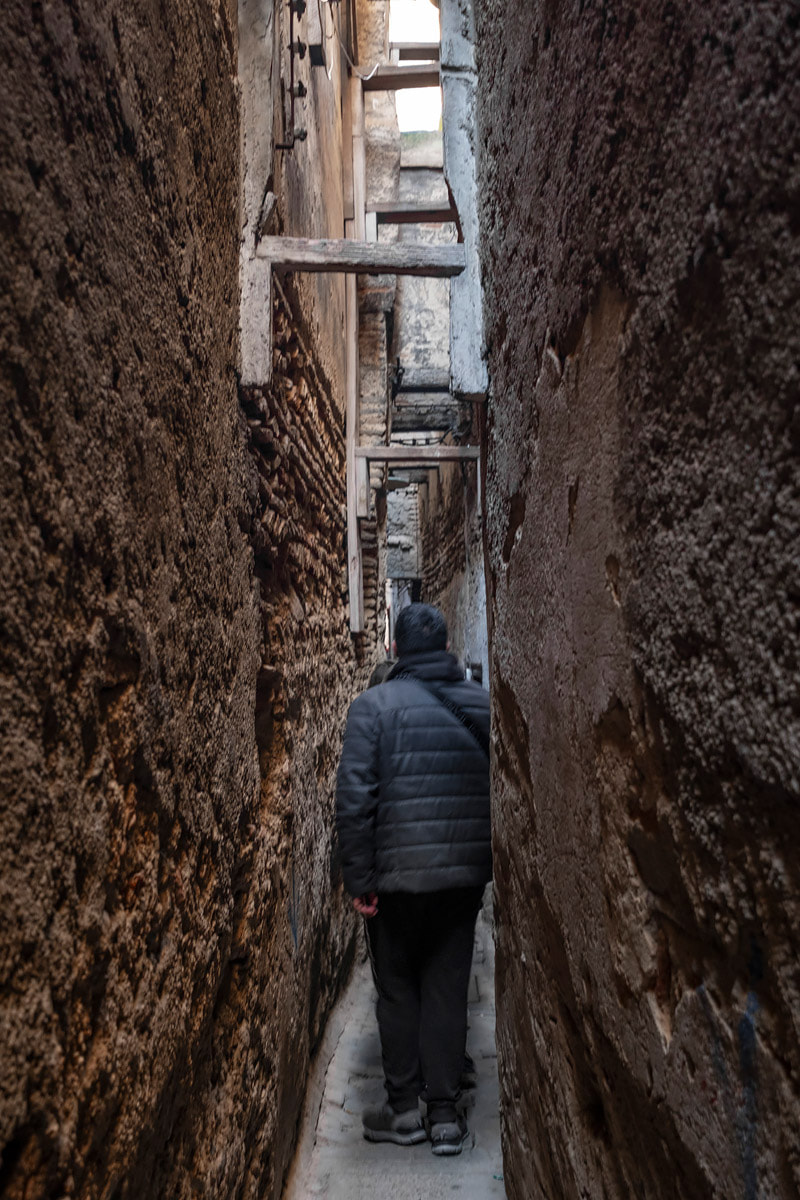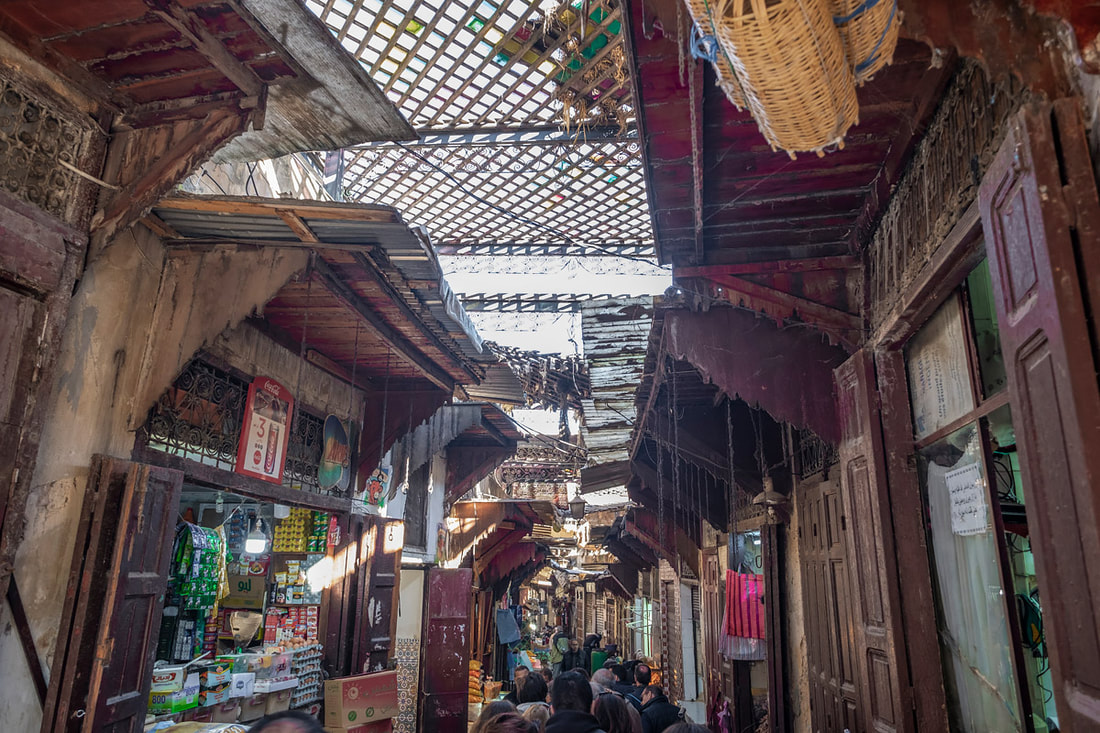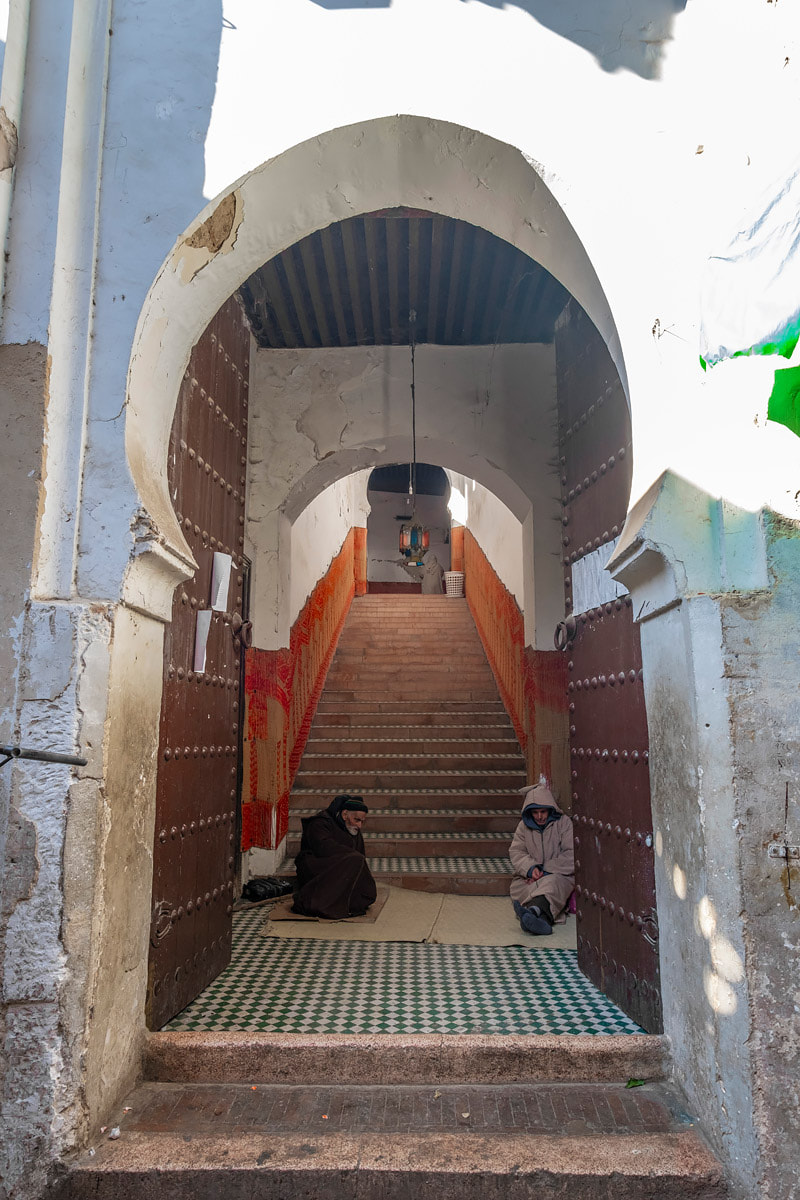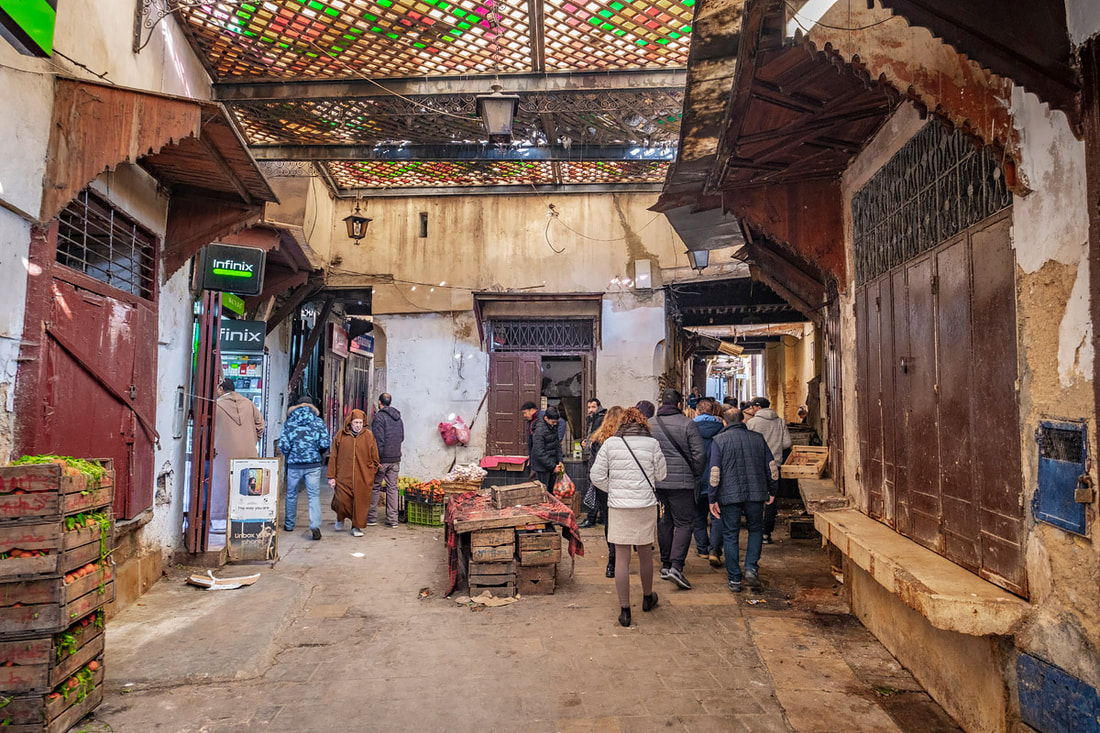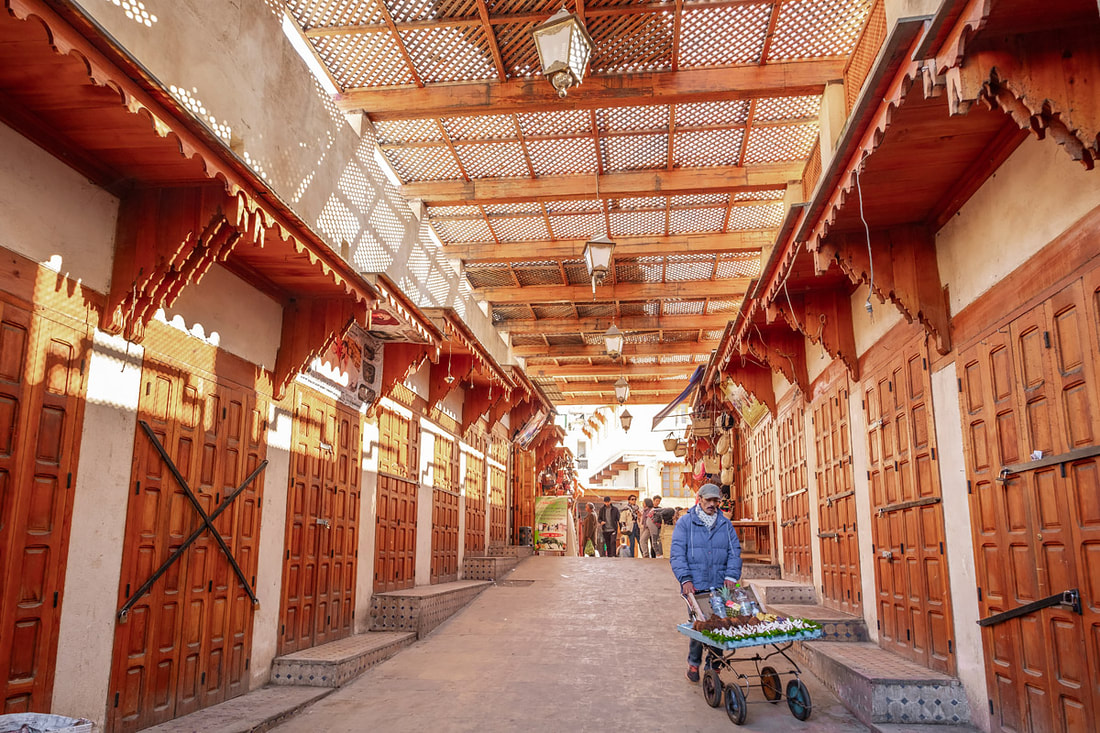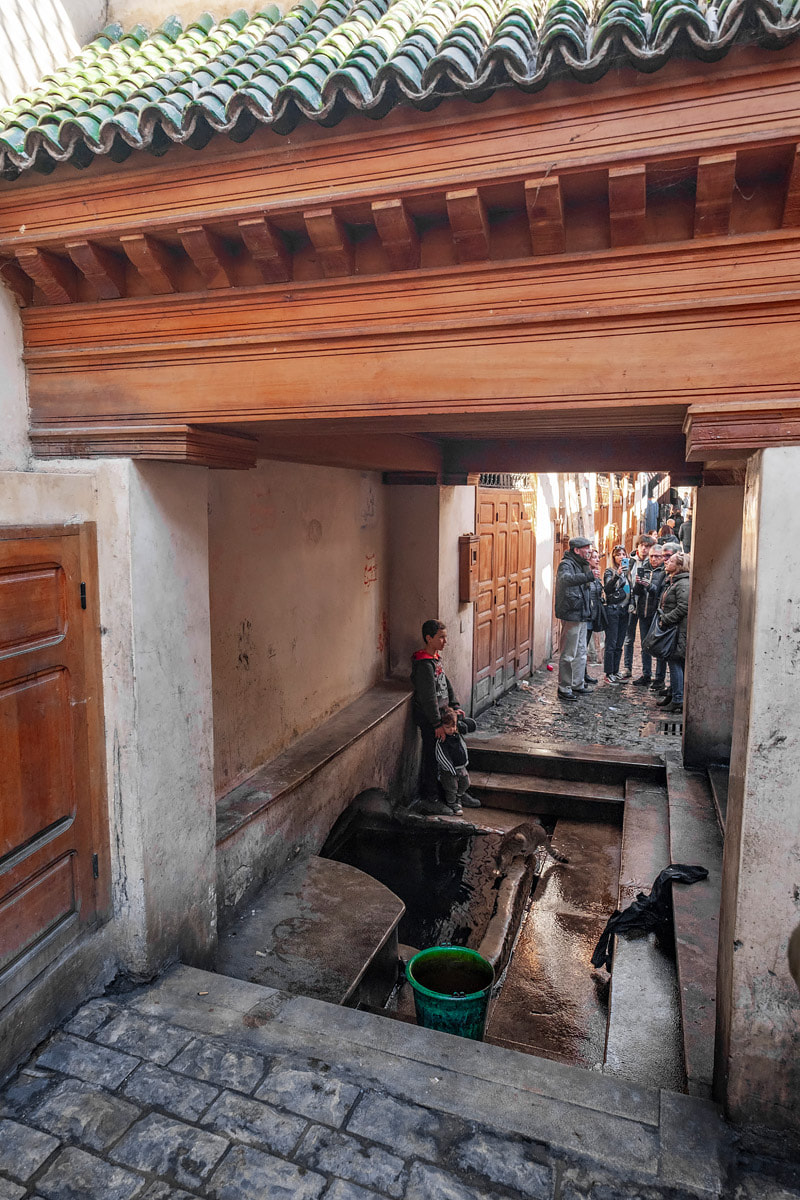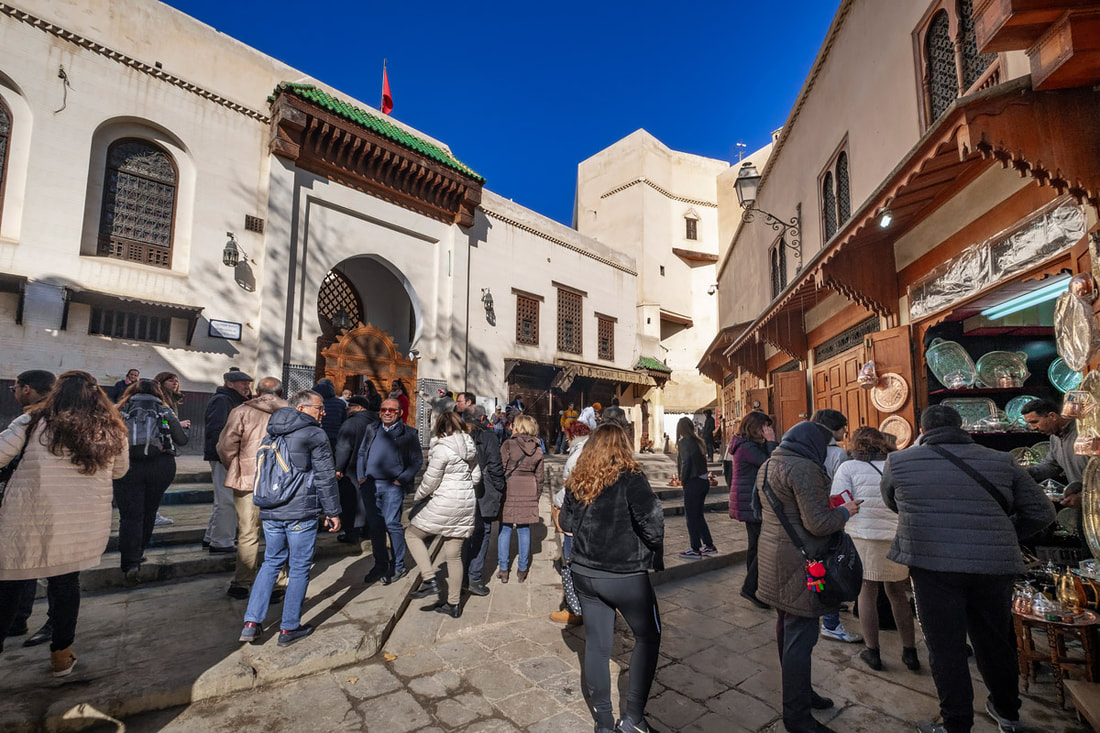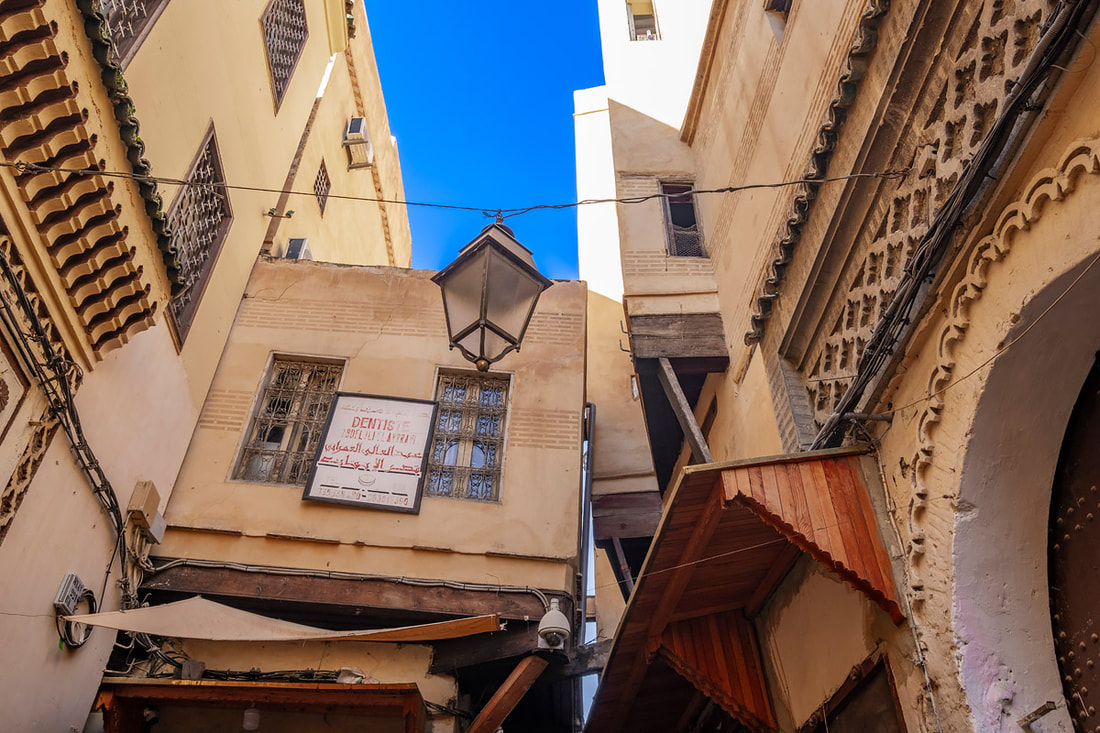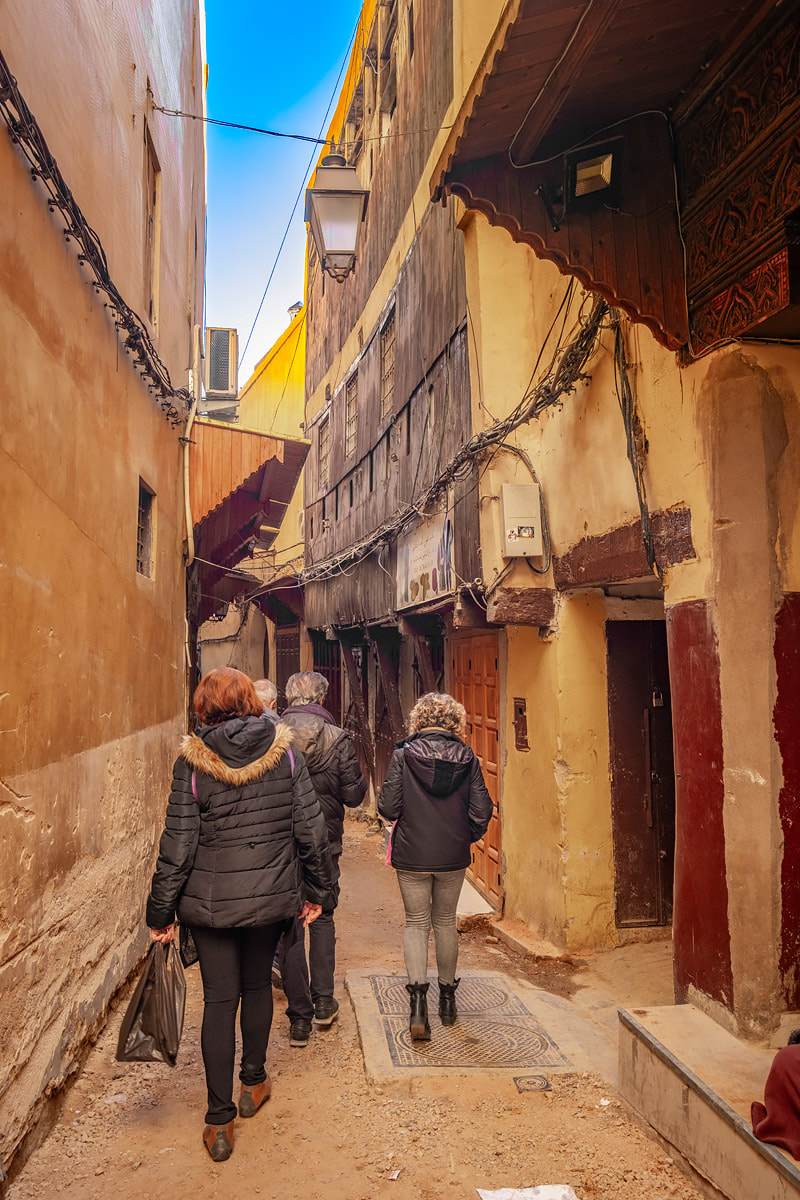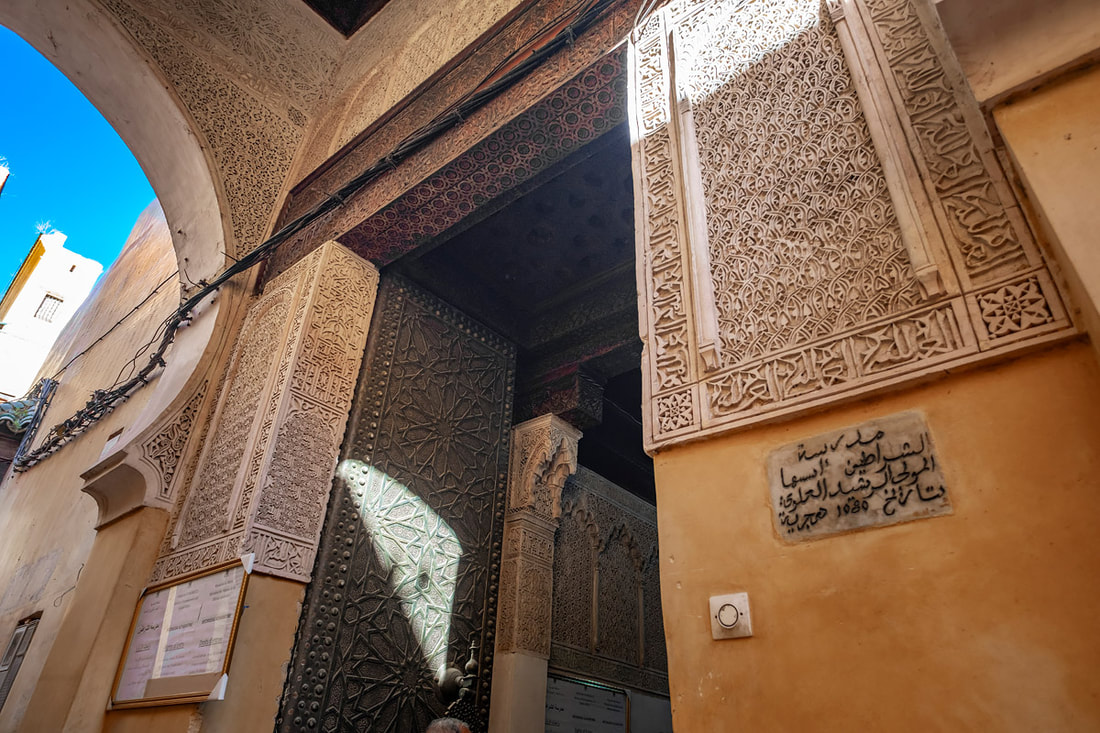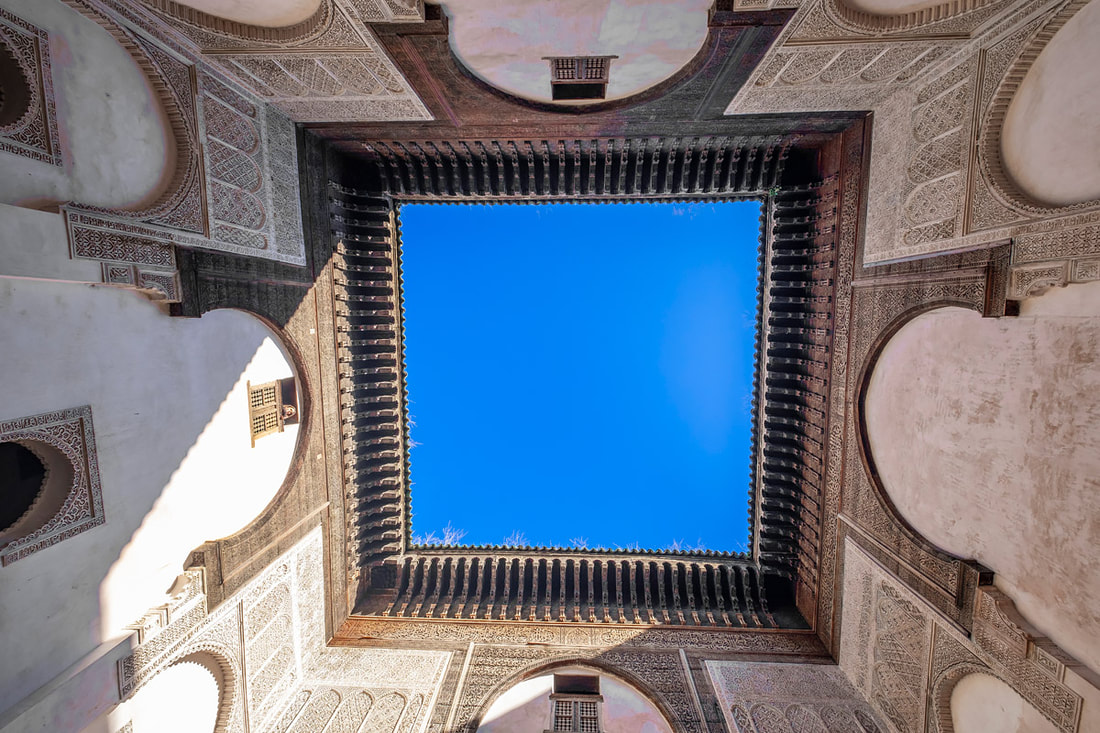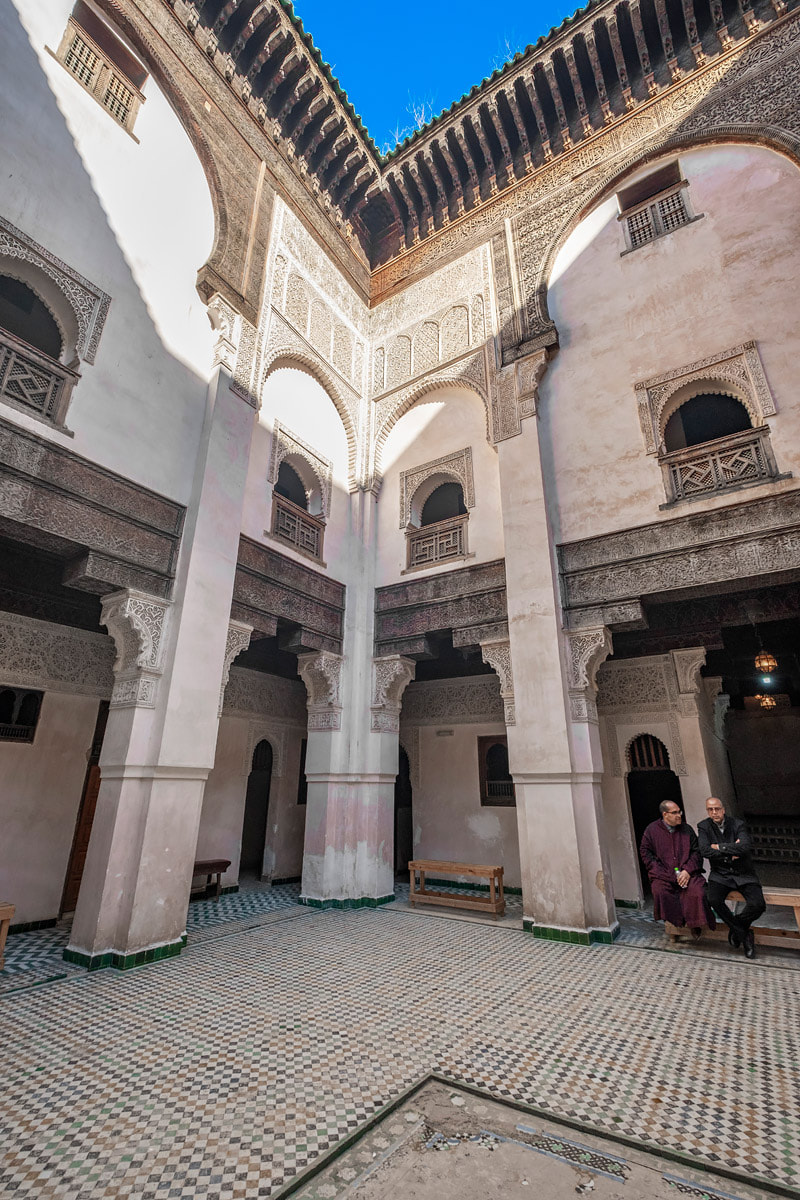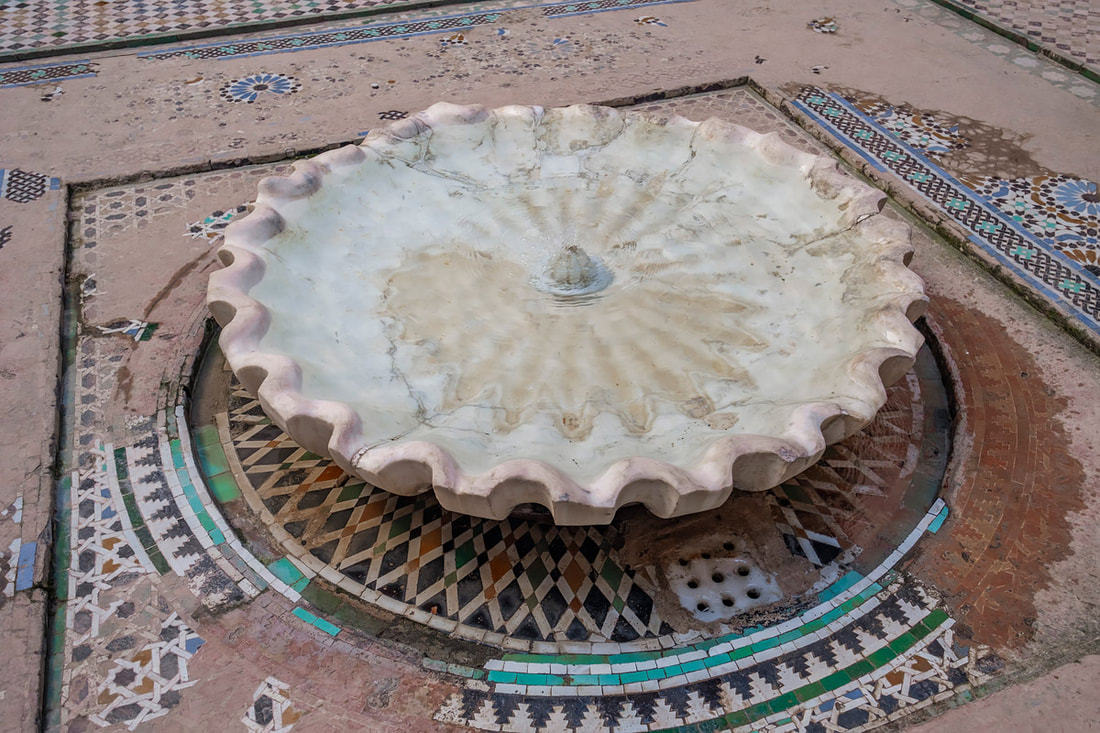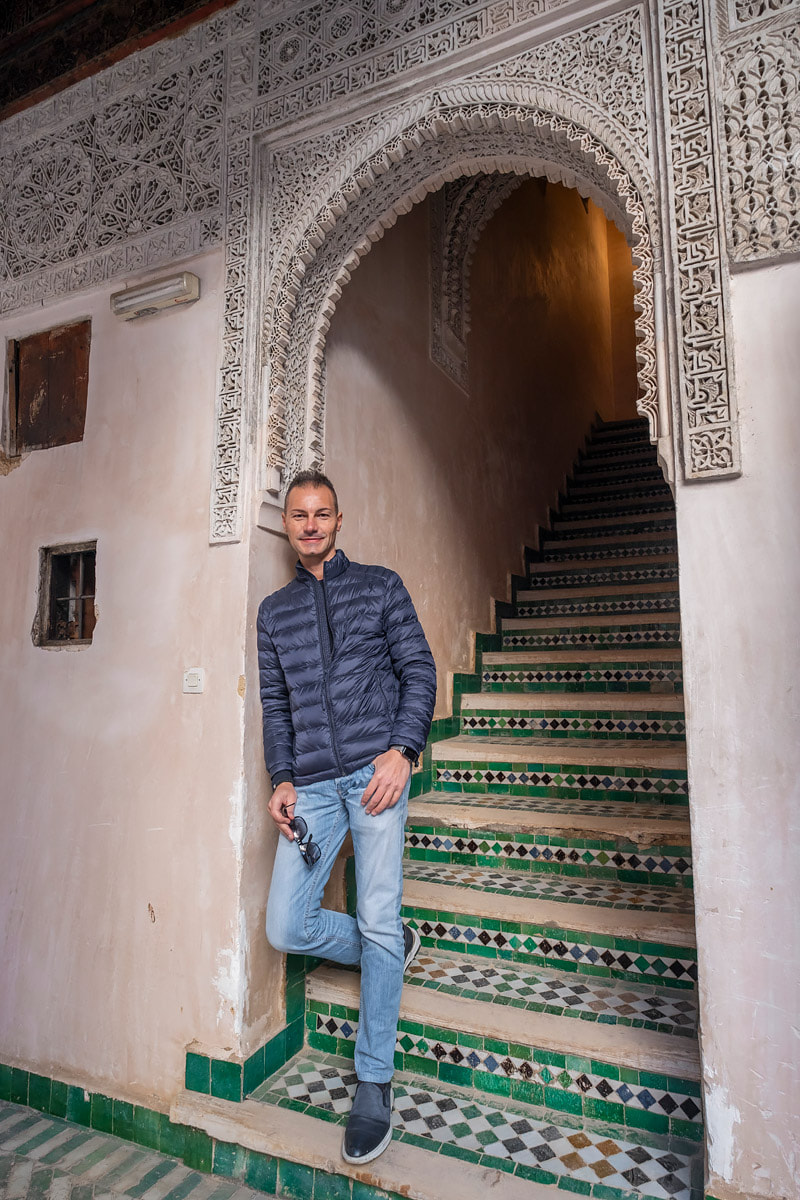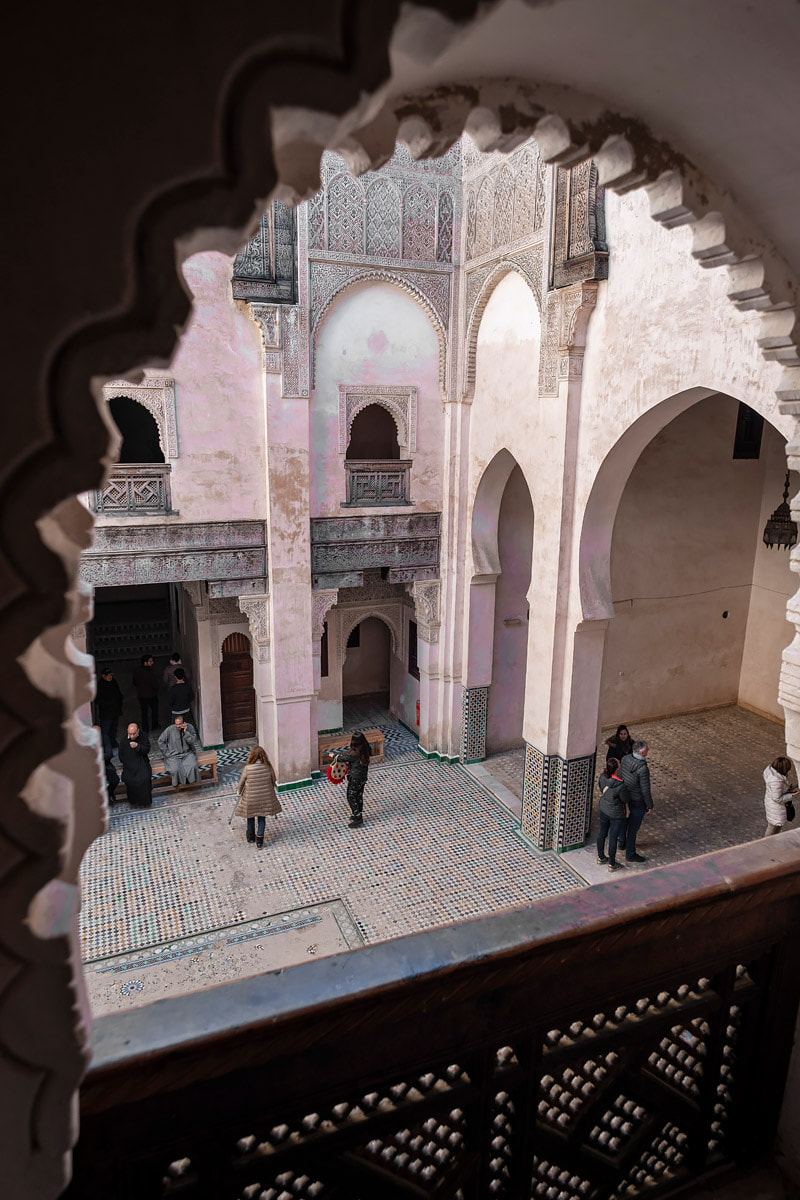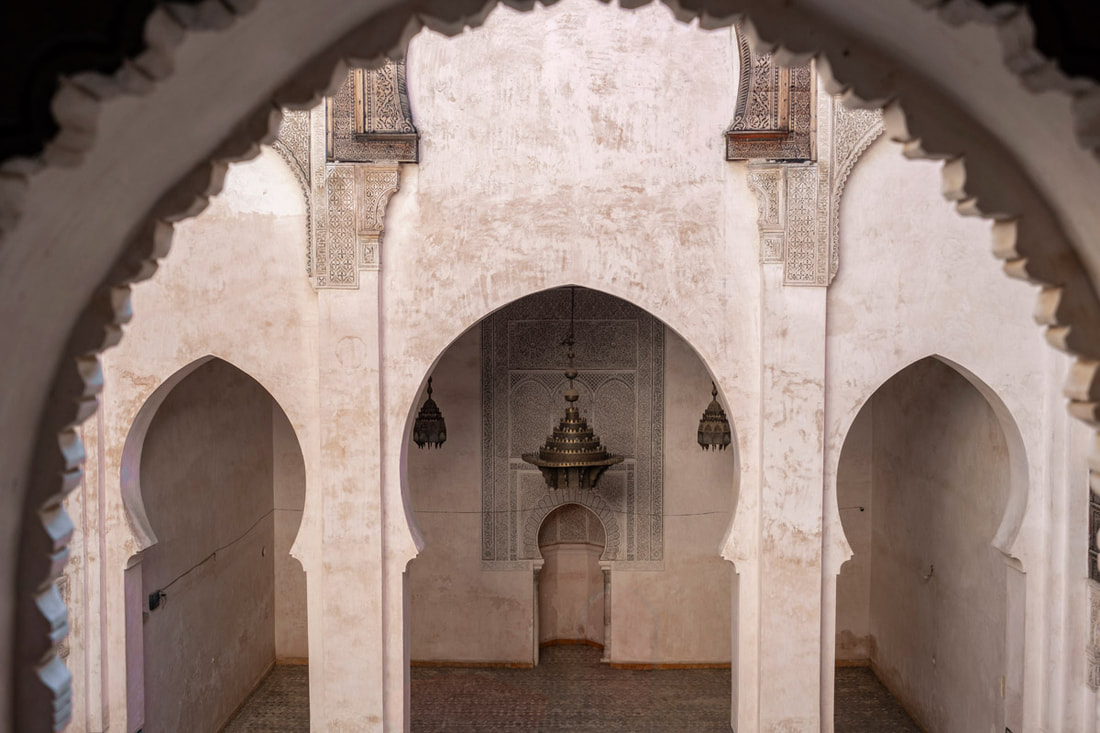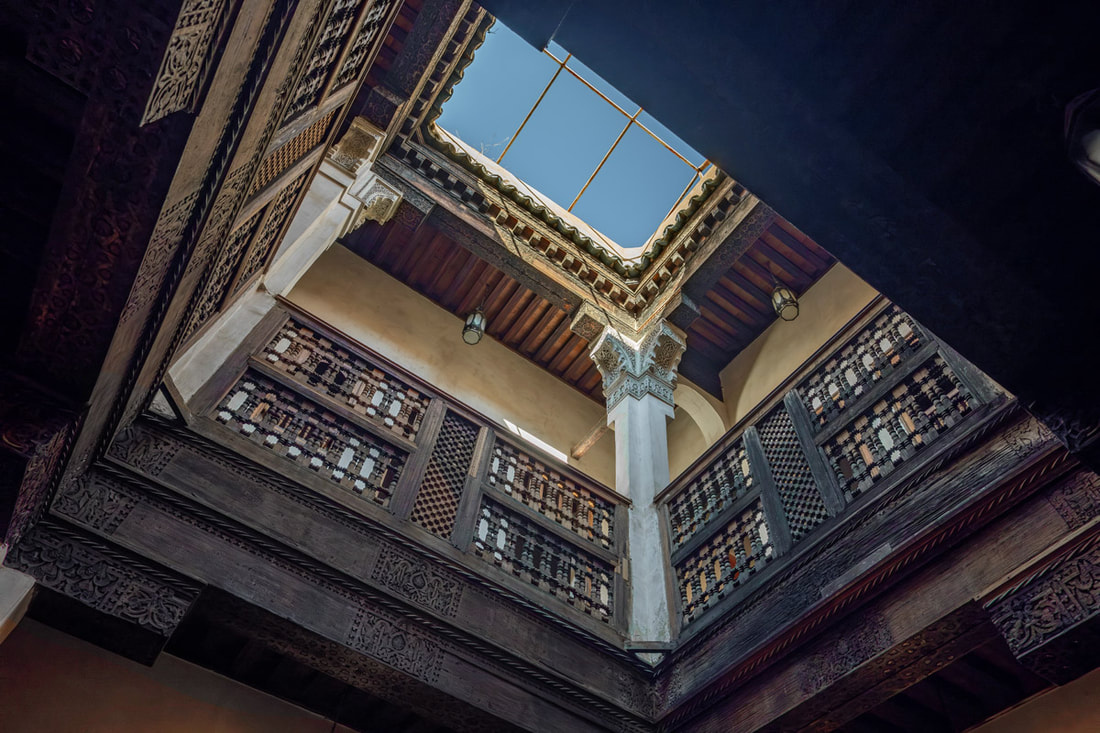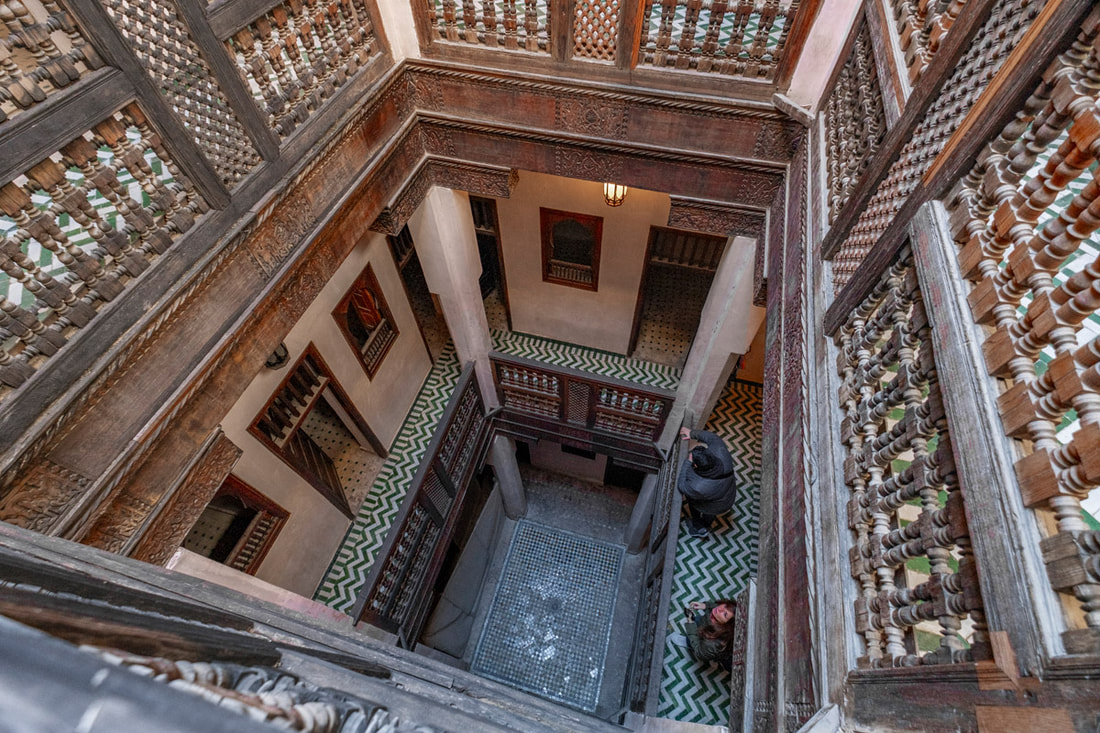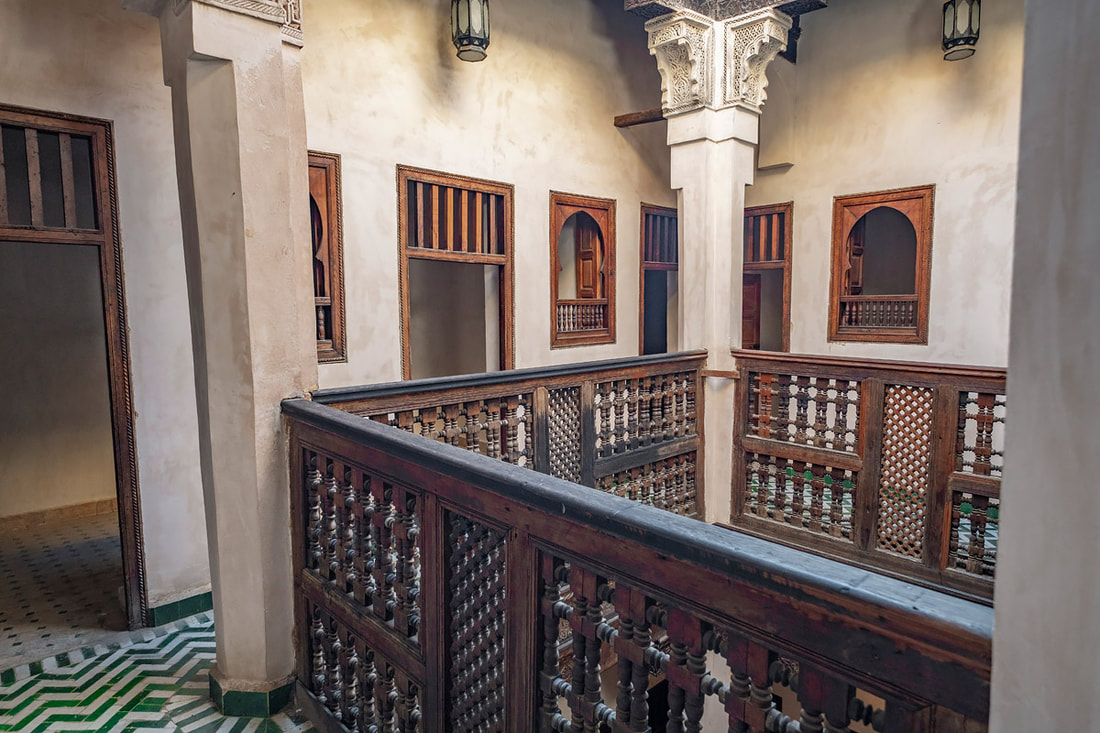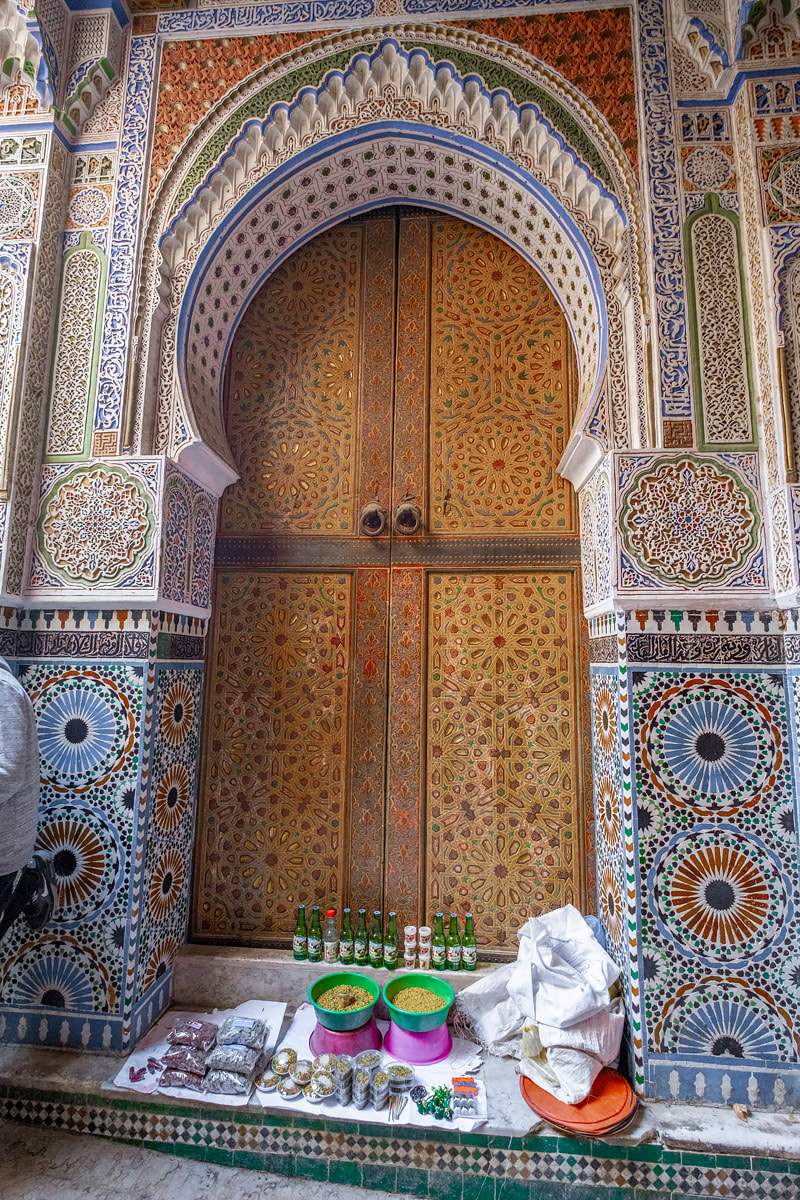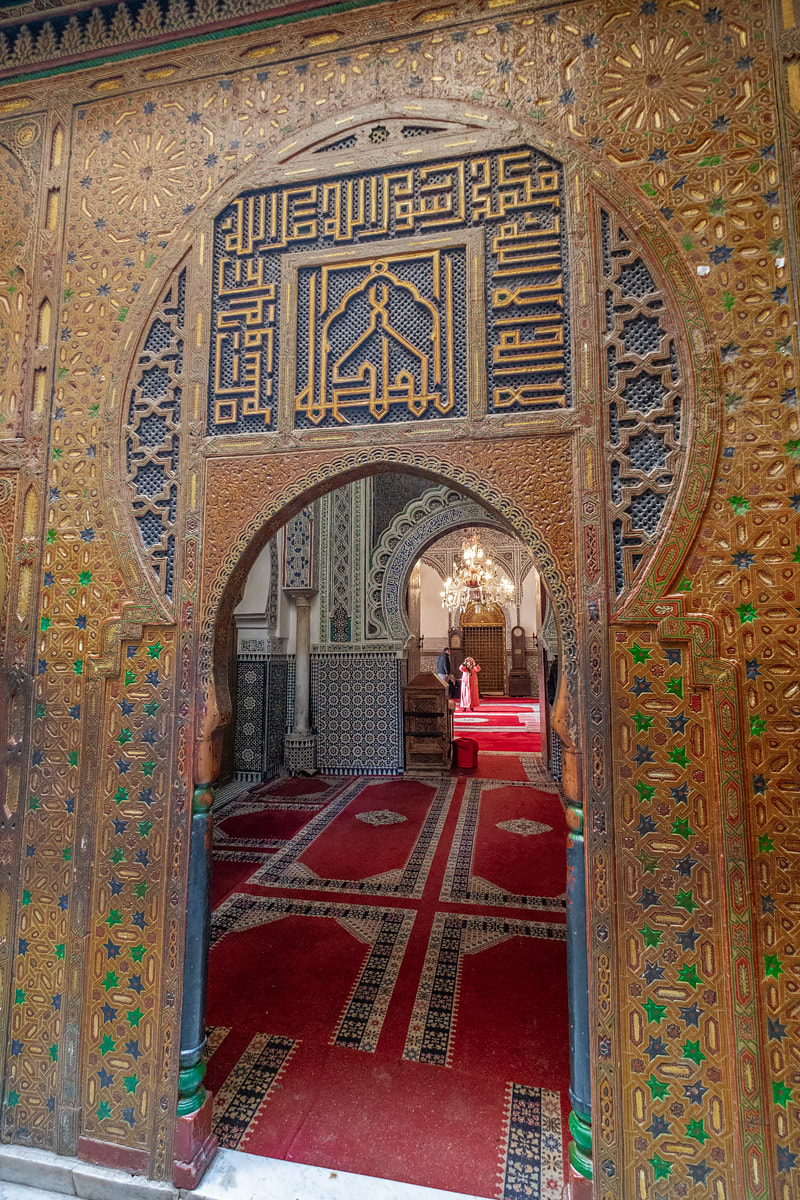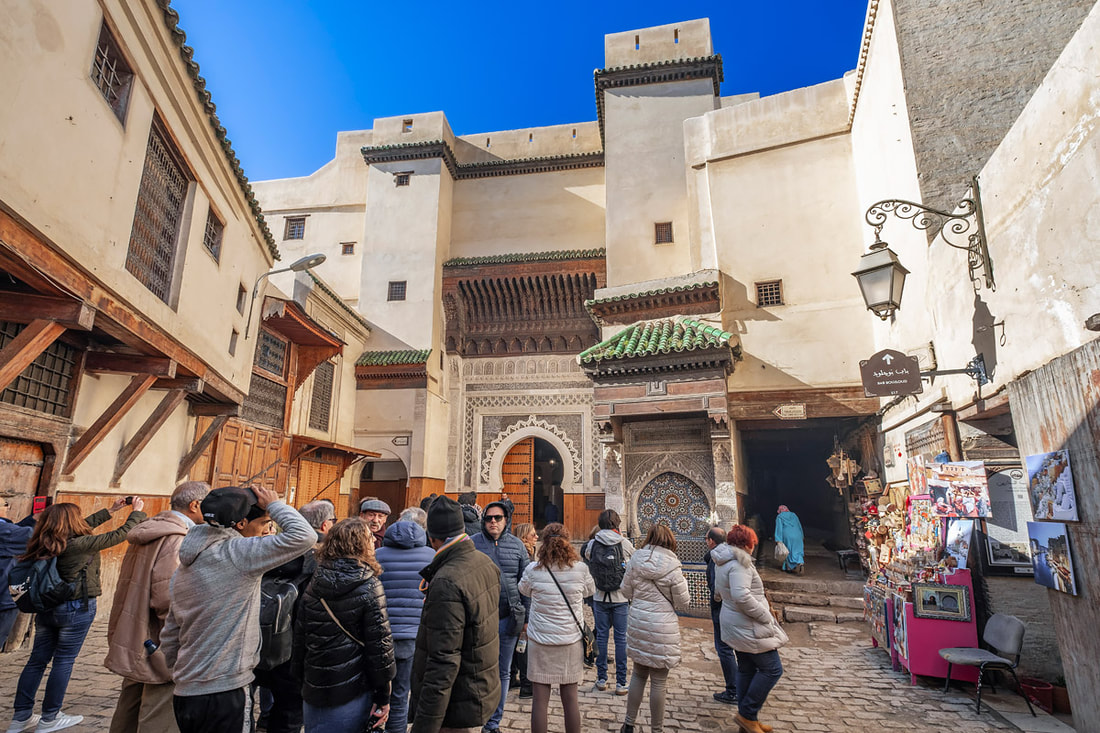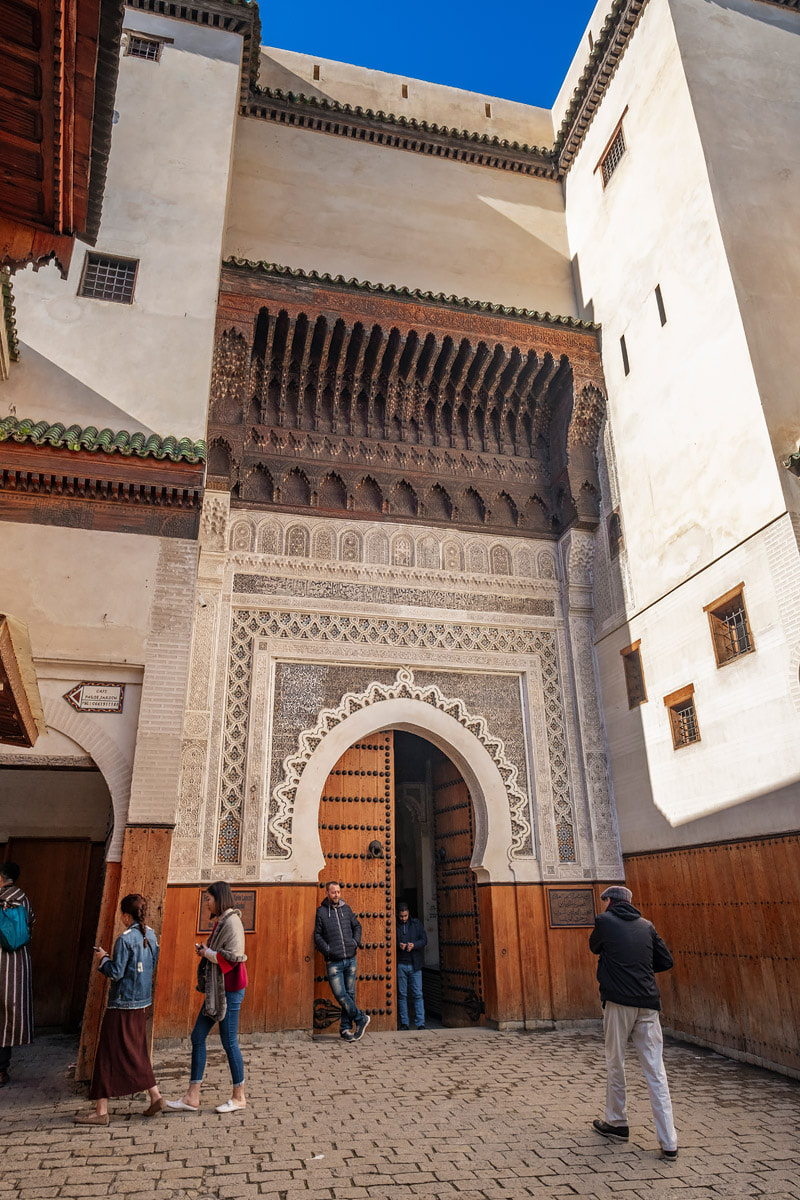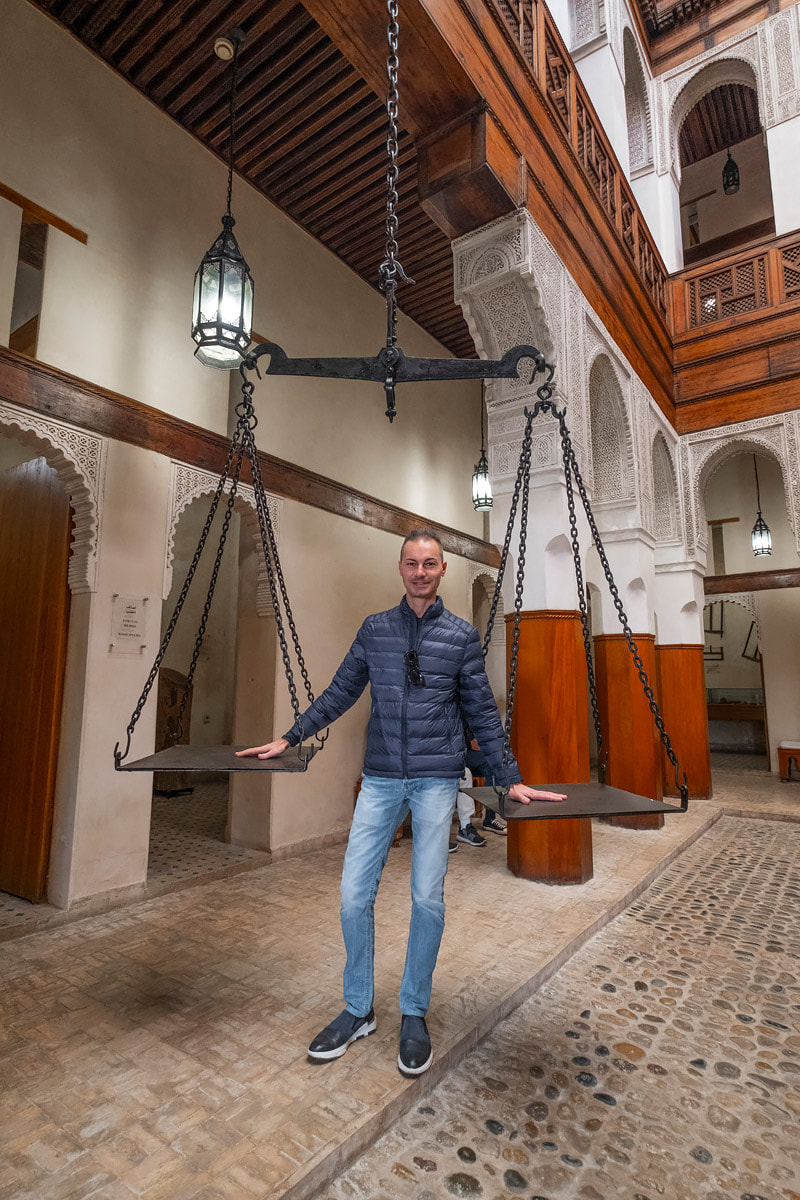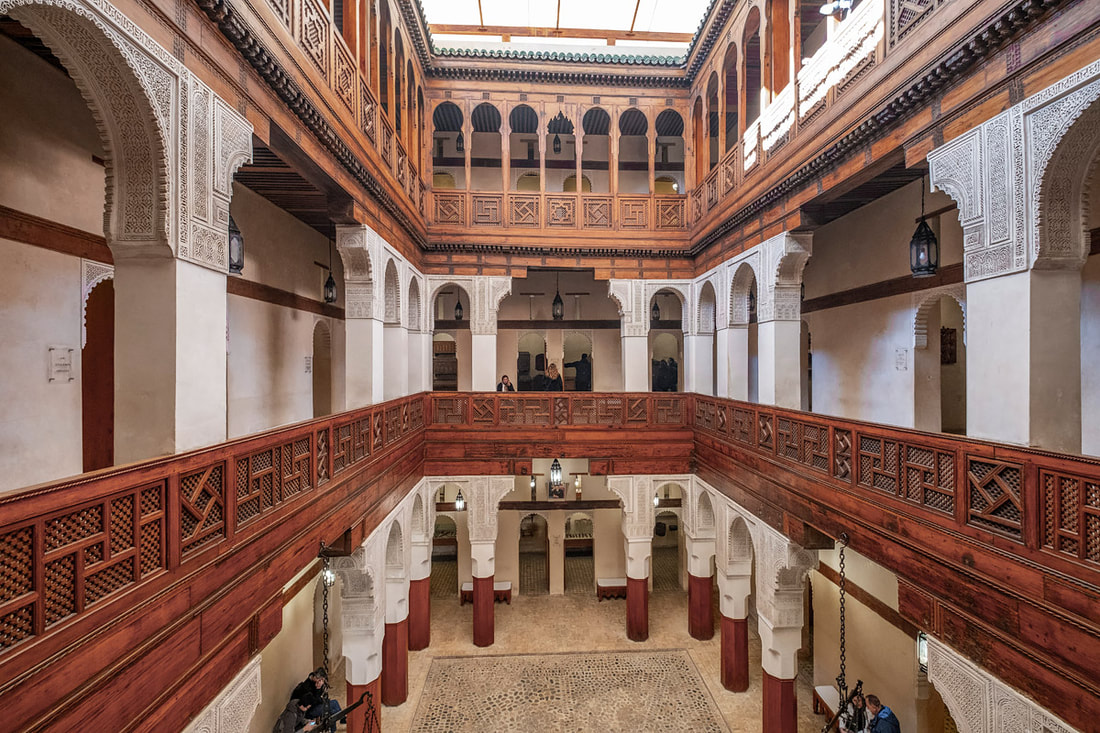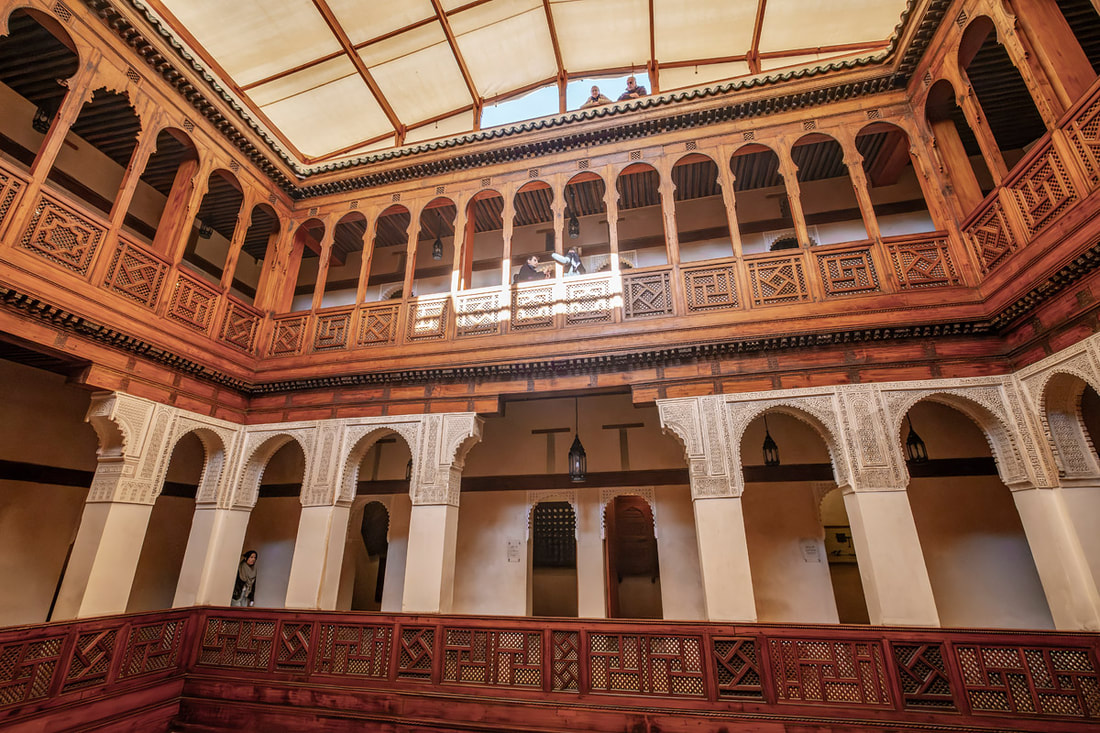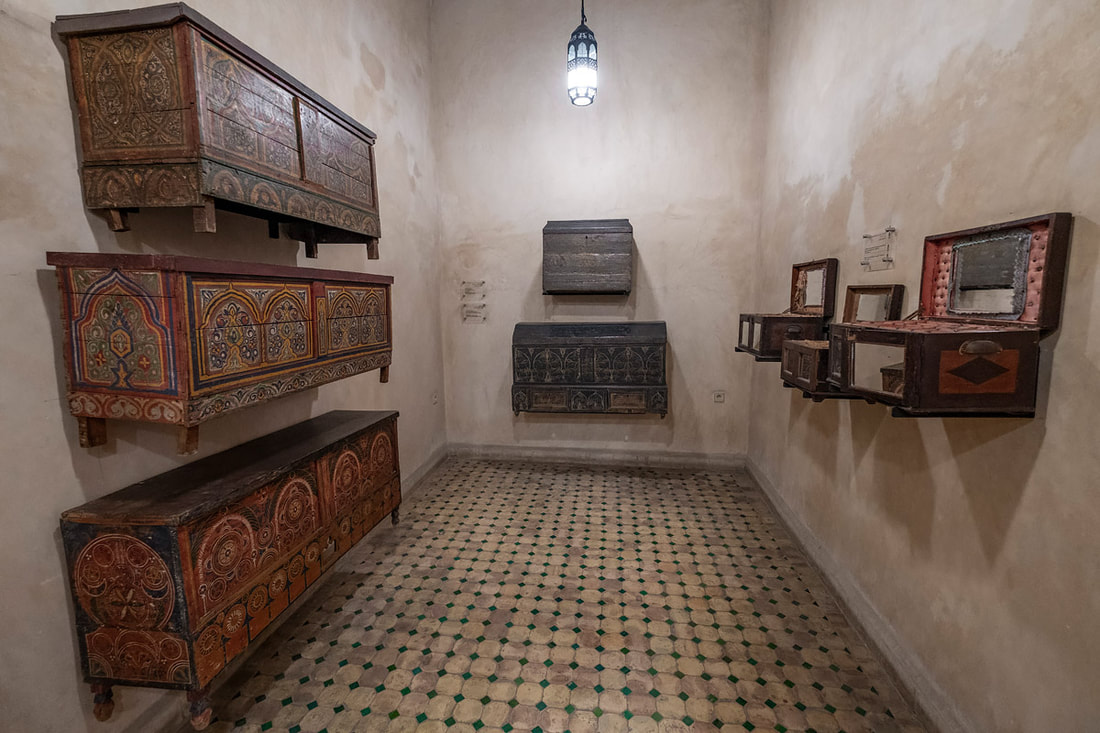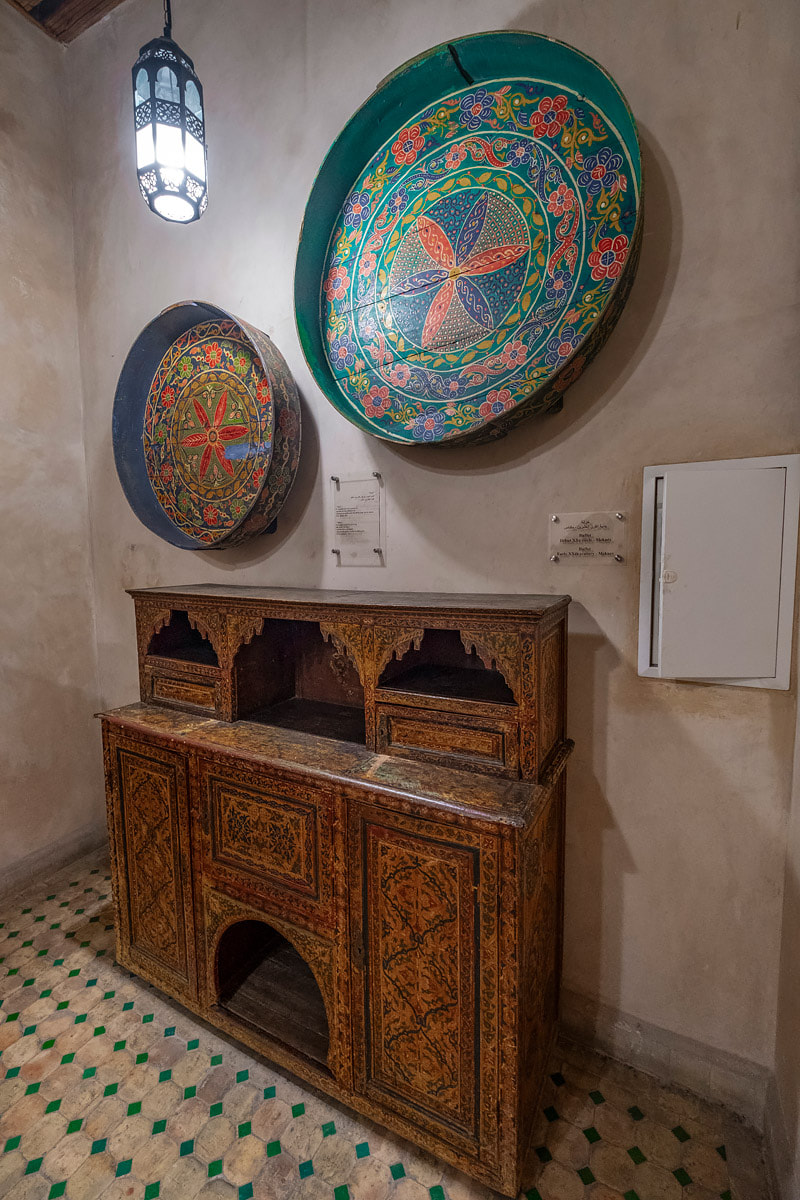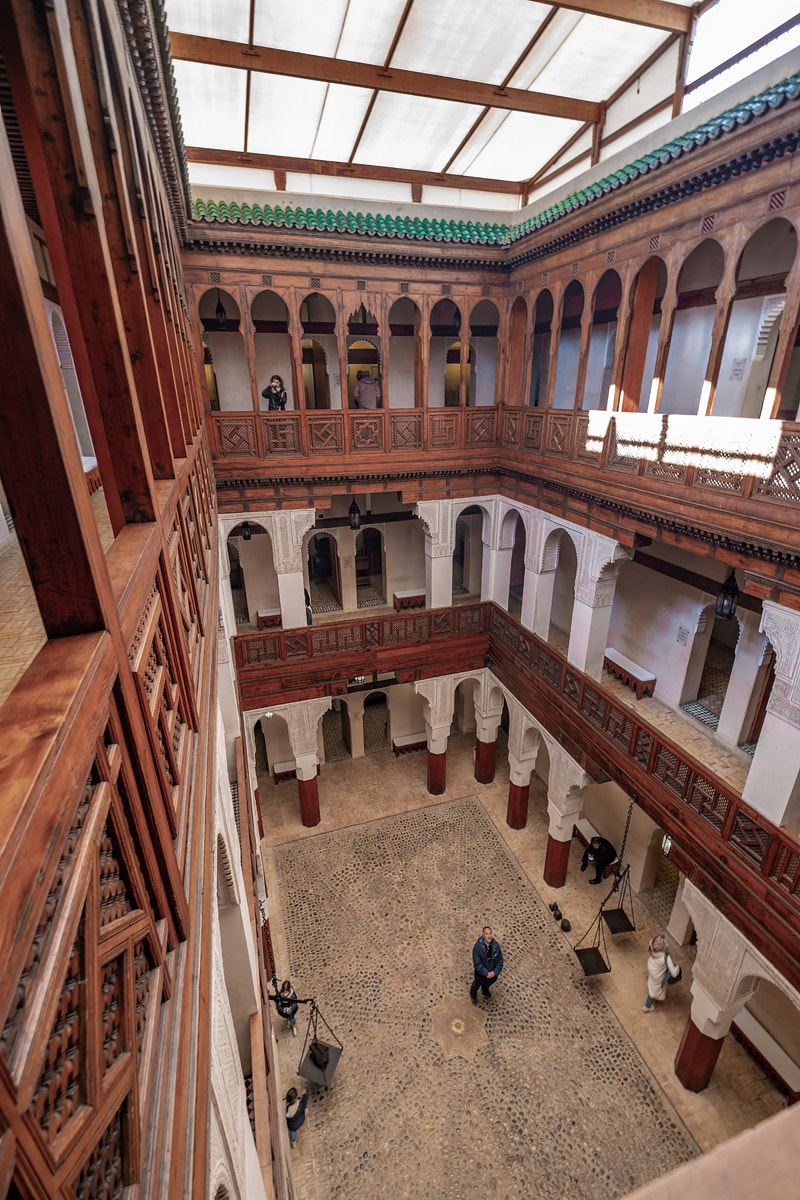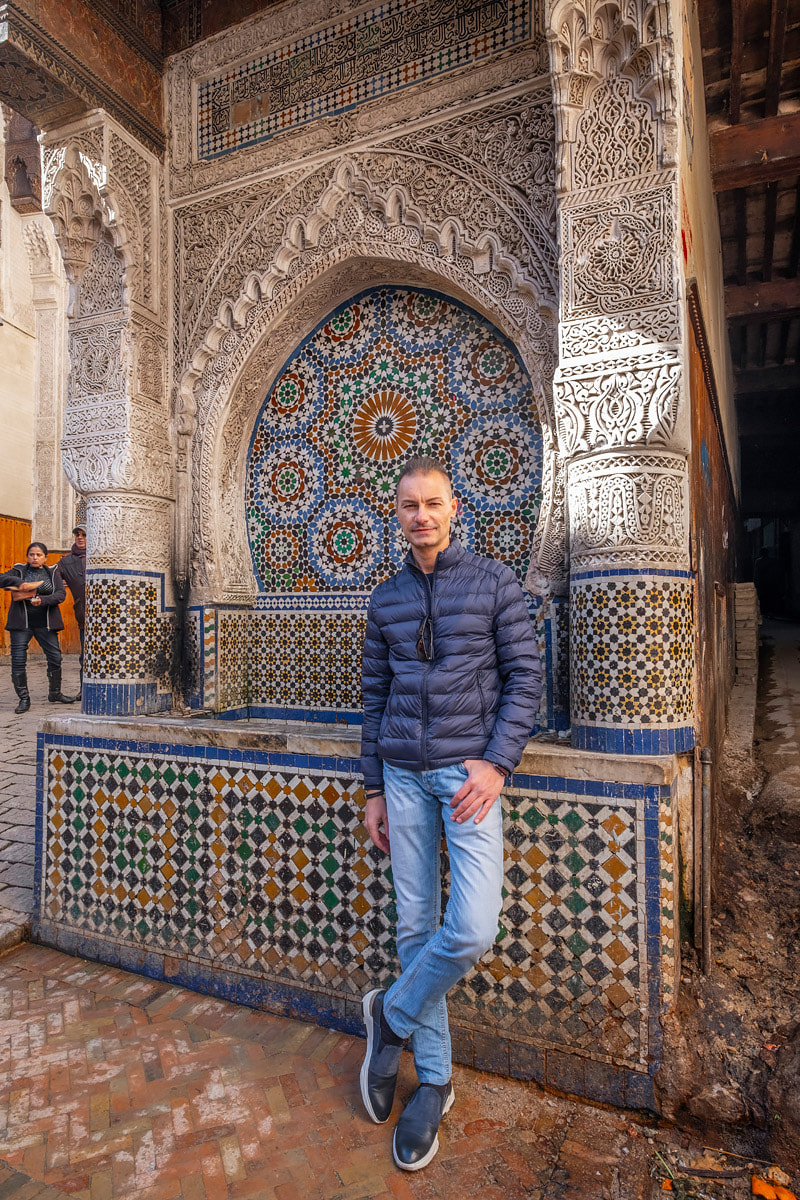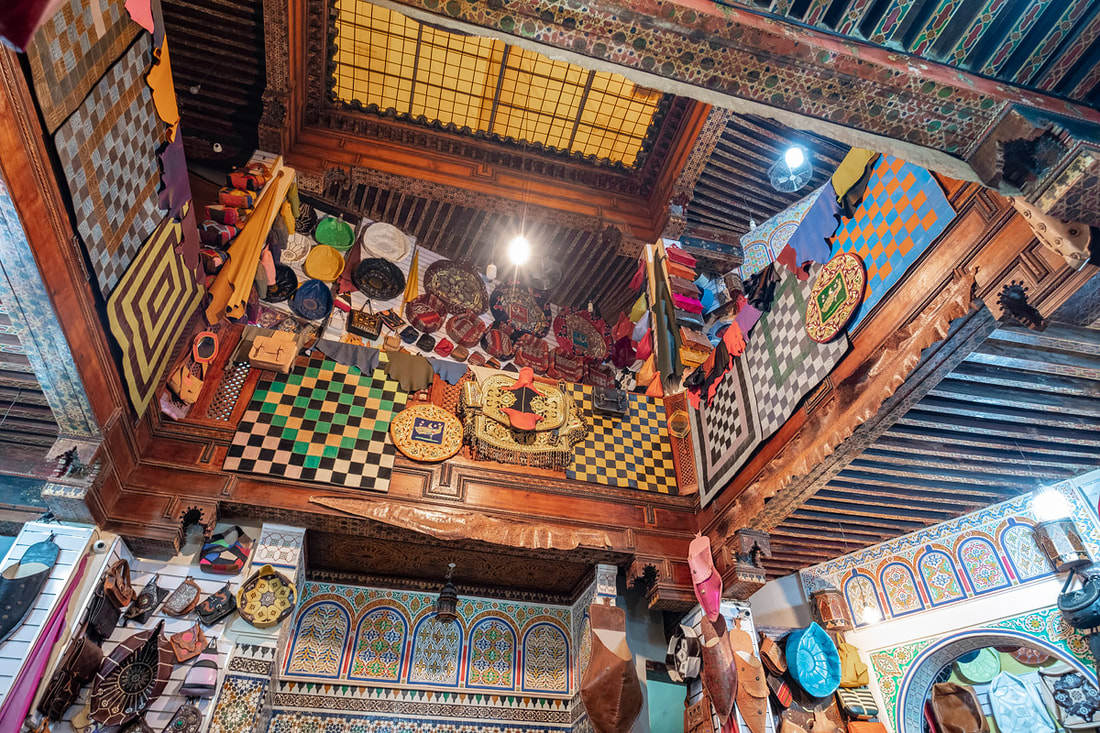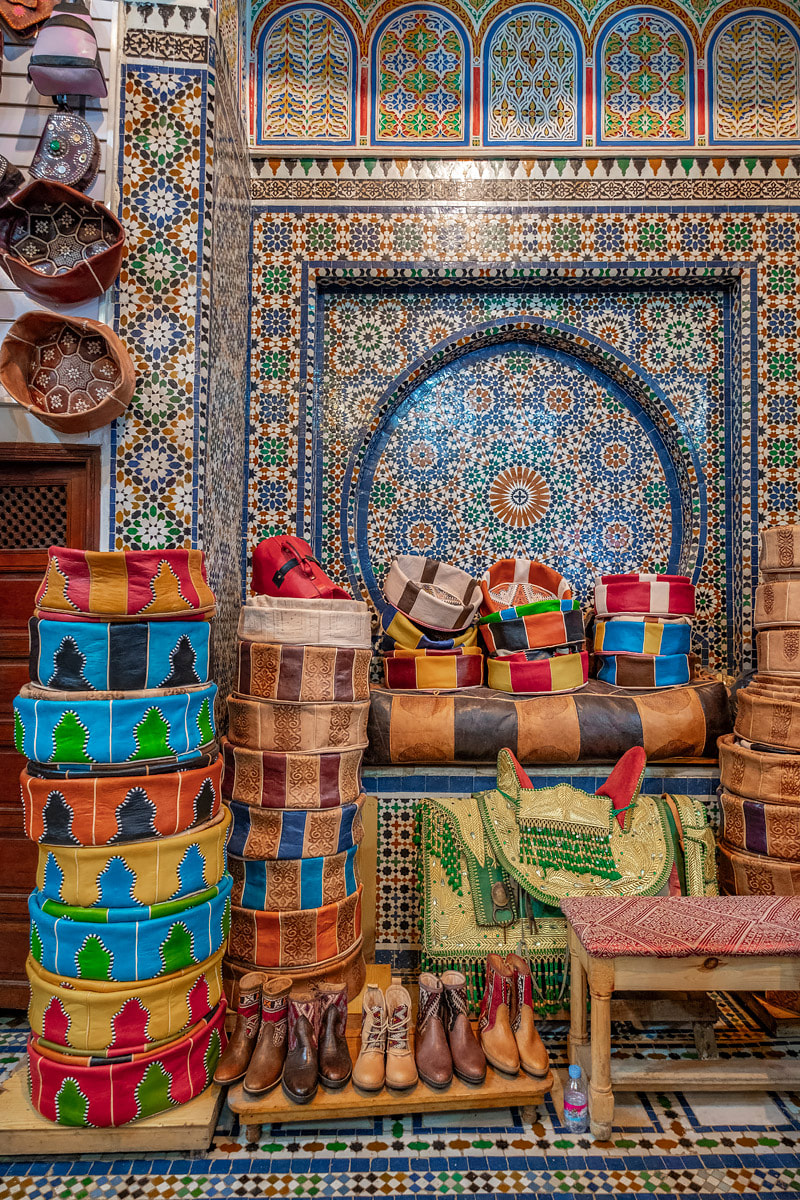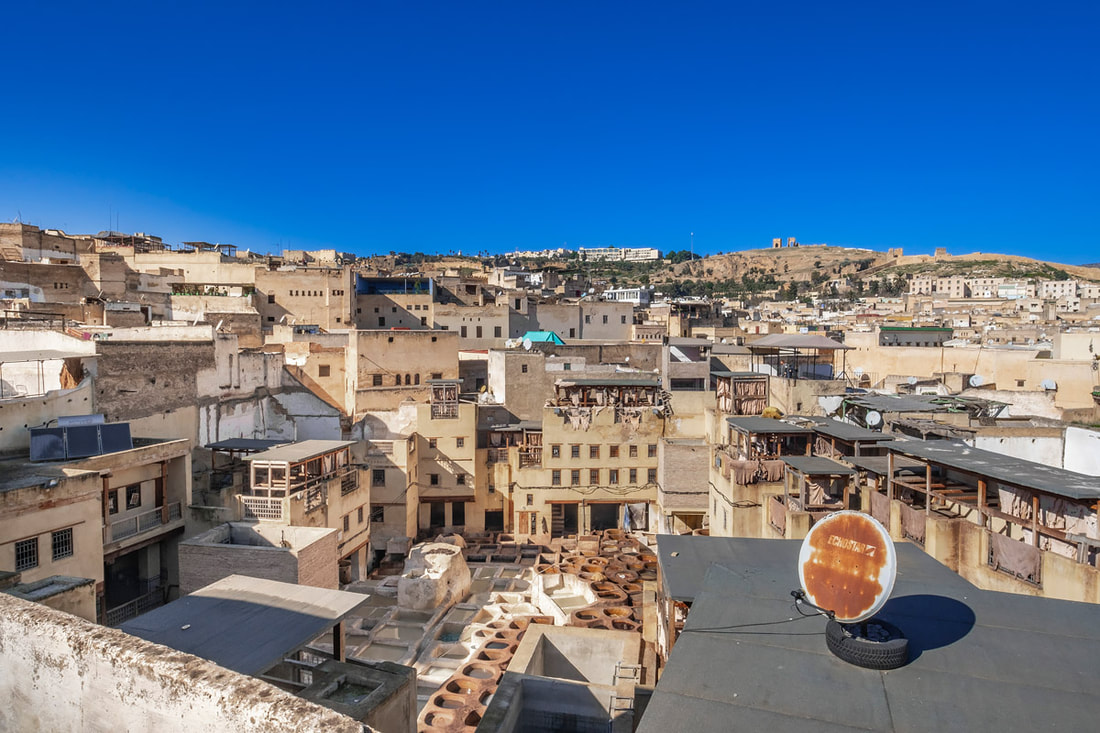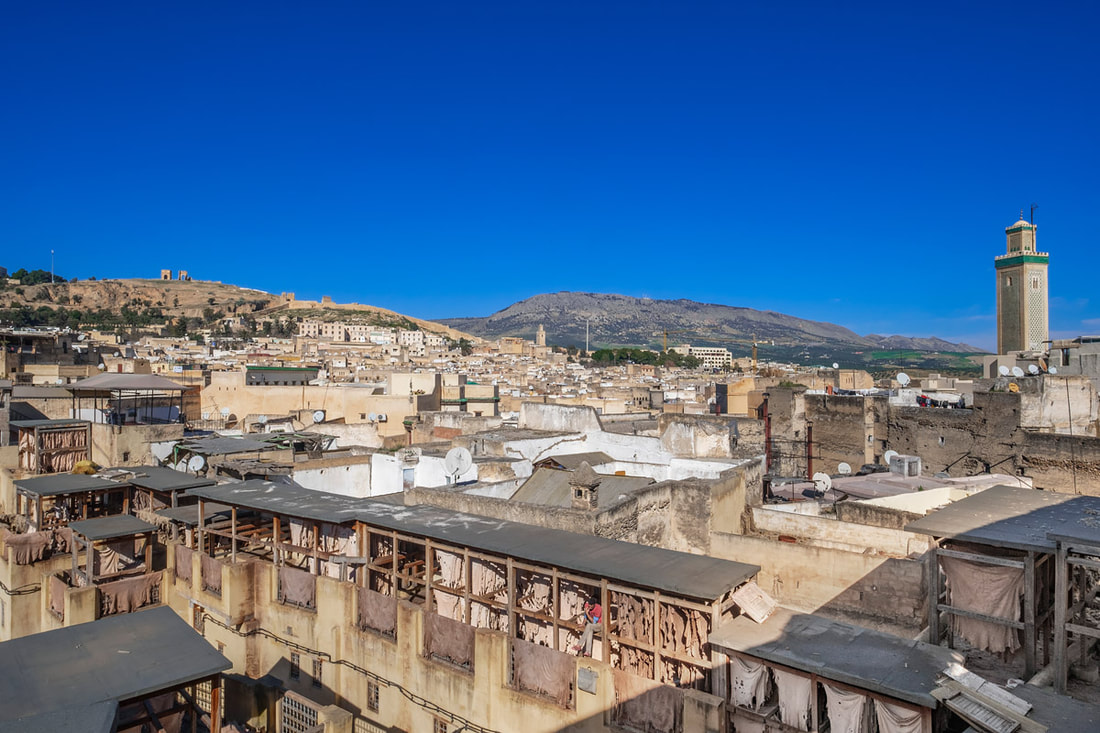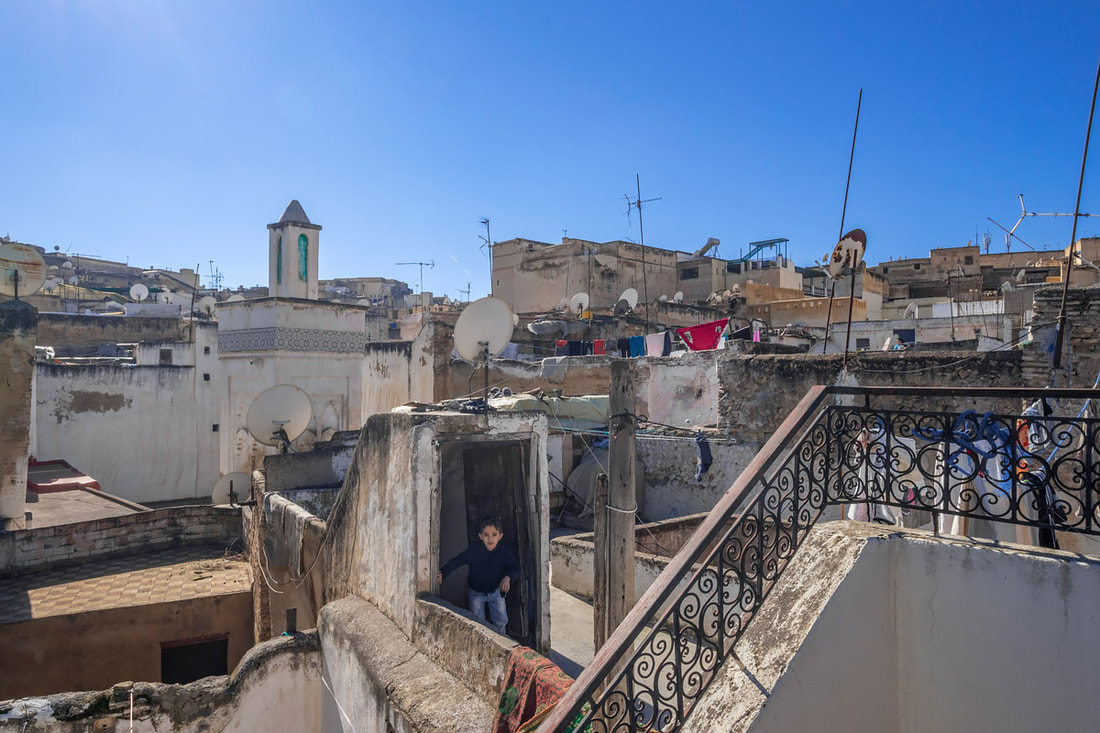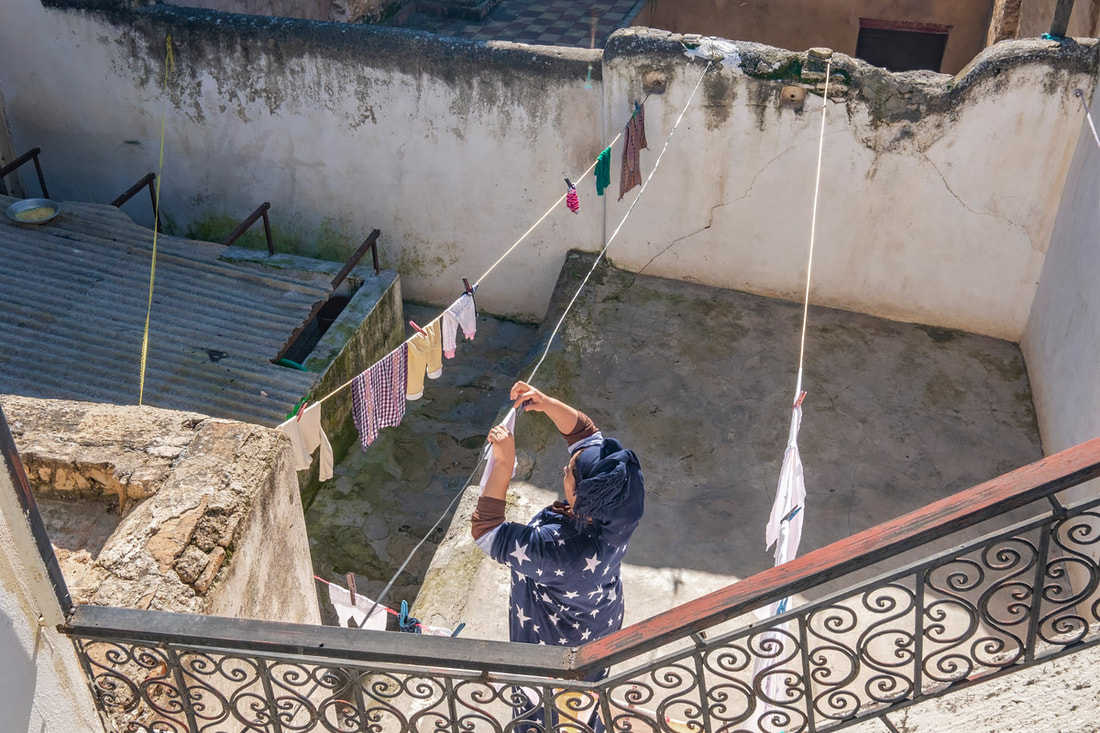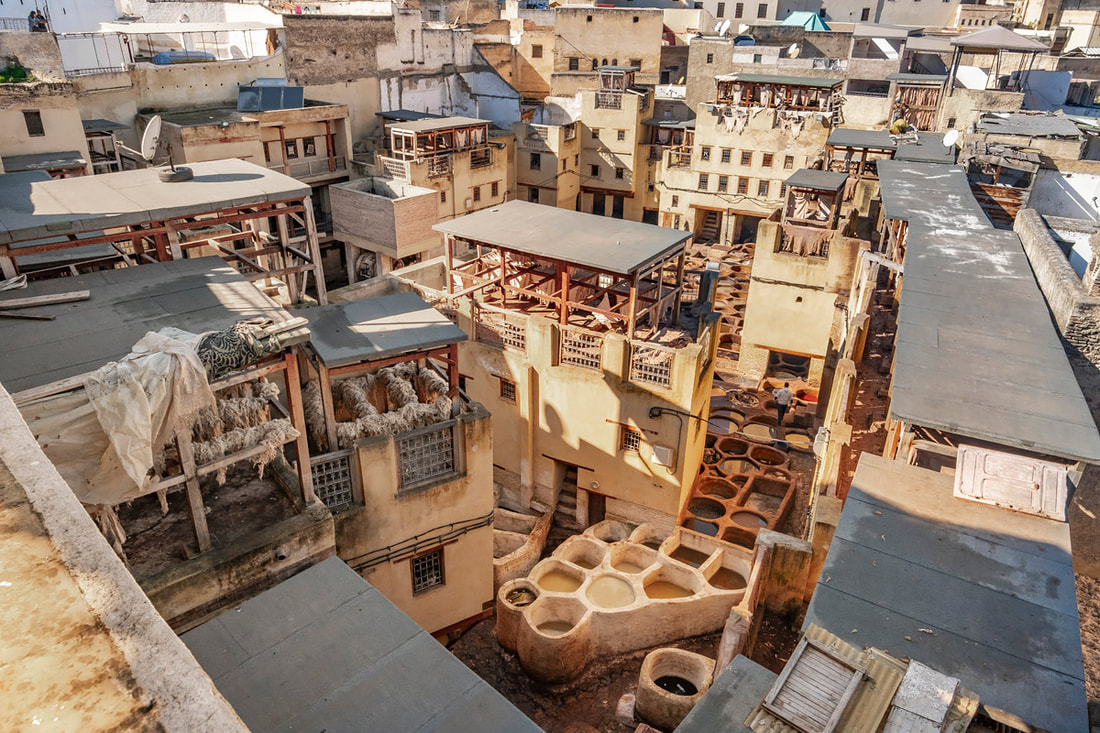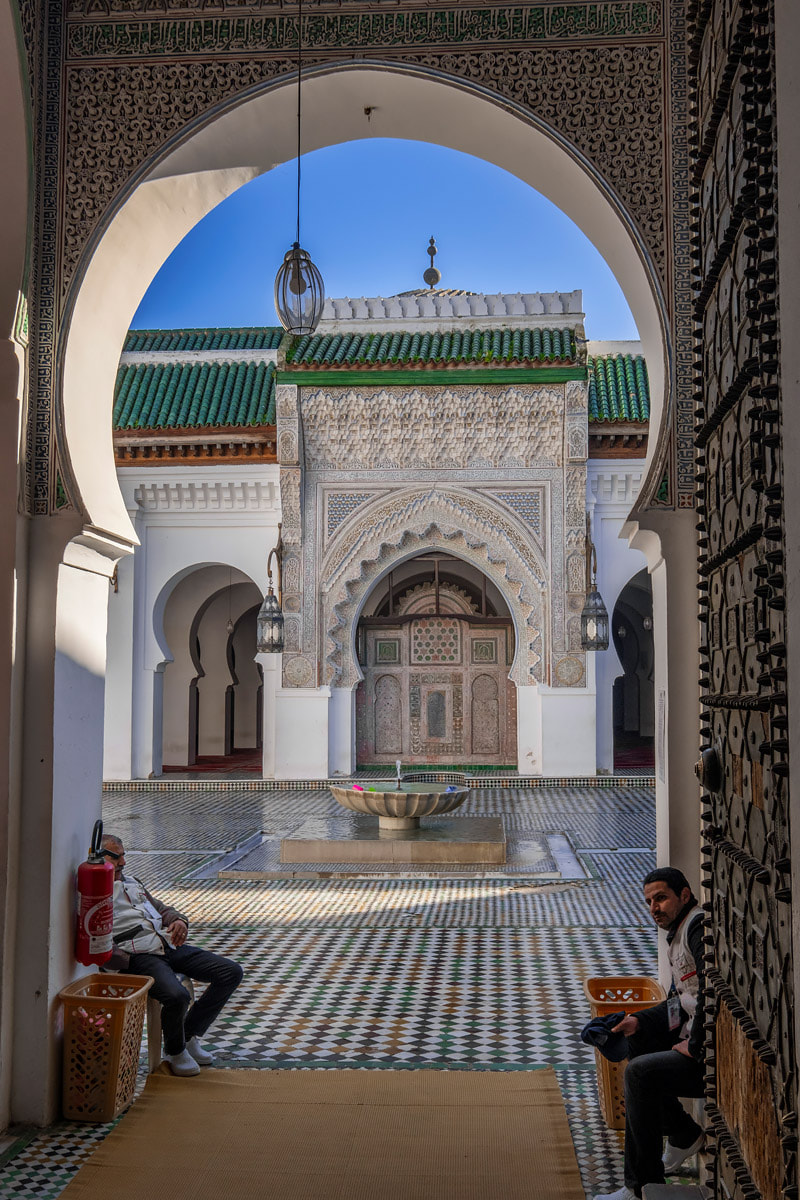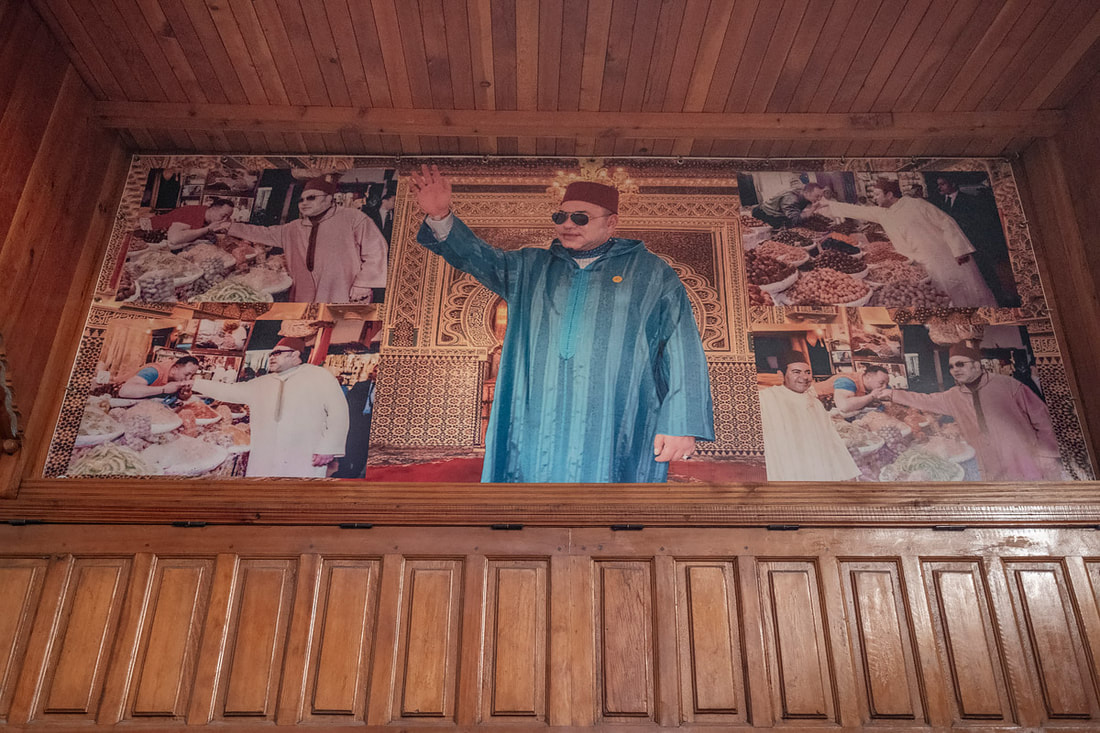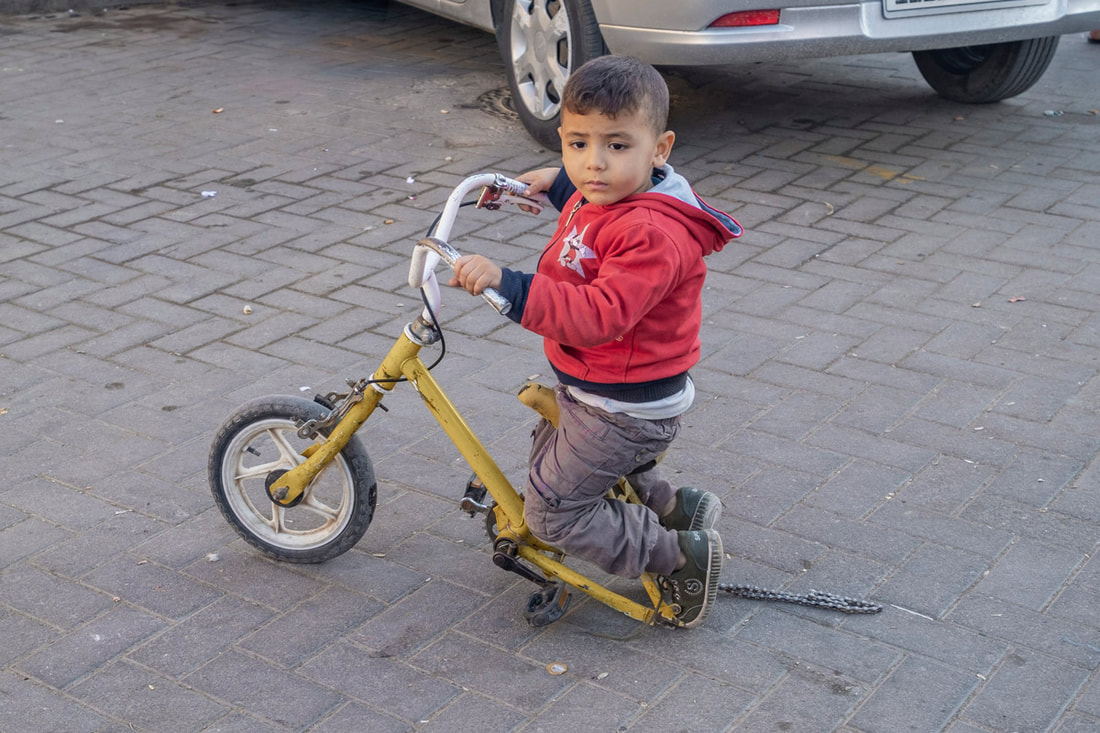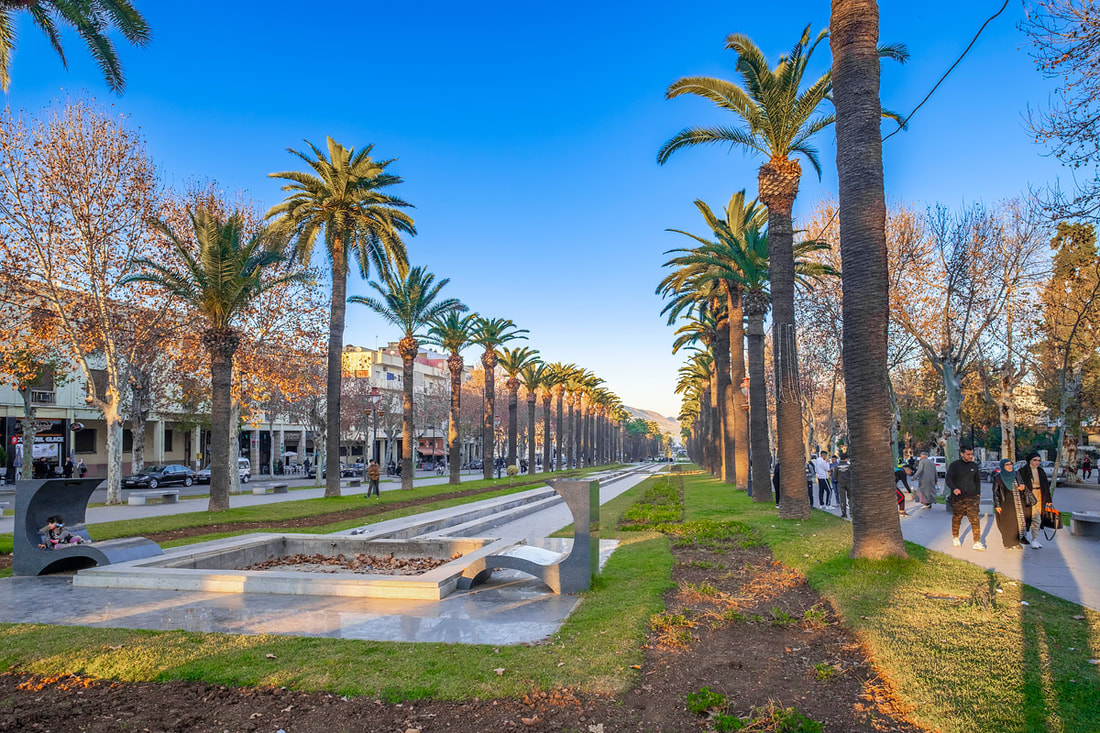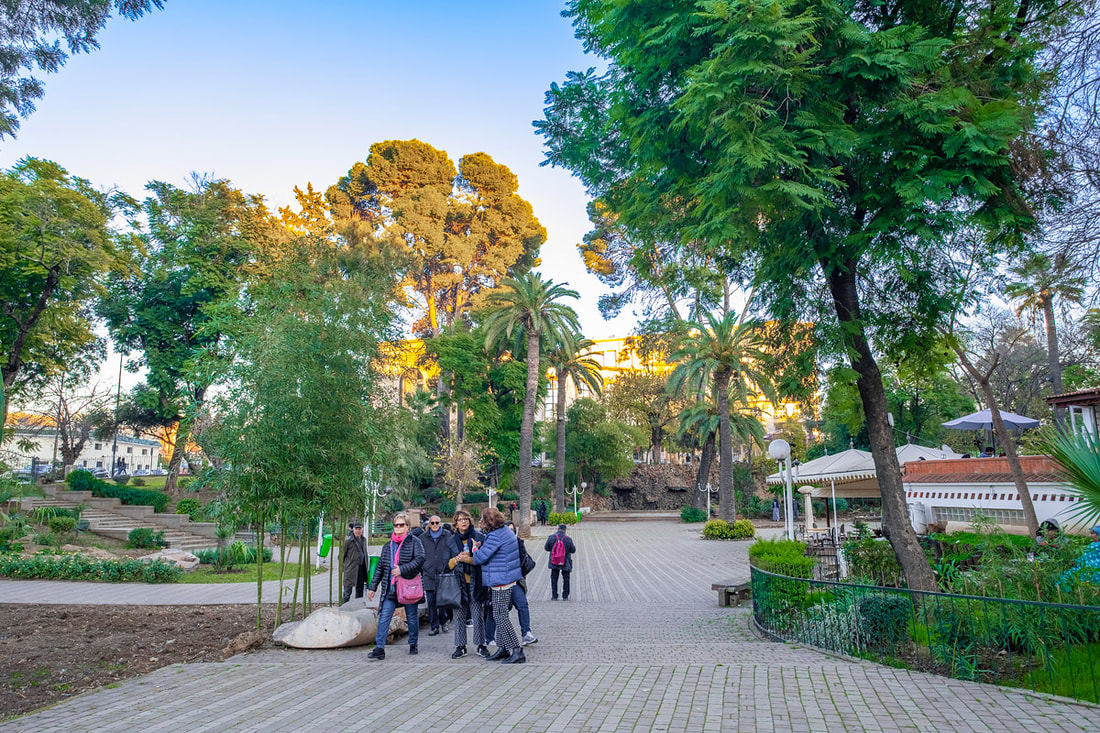By Antonio MalaraAfter Casablanca, Marrakech and Essaouira, Fès was the fourth Moroccan city I visited during a trip made with my sister and a group in January 2019. Casablanca was our first approach to Arab culture and its architecture, in Marrakech we had the first experience with a real Medina while Essaouira was a surprise; a city that mixed marine traditions while maintaining an Arab soul emphasized by the colors that were the expression of the soul of its citizens. Fès was considered the peak of our tour, an imperial city which had the most interesting works and the most beautiful Medina. Even during my research before leaving for Morocco, Fès was the Moroccan city par excellence, where you could find the most beautiful things and the true soul of the Moroccan people. Also known as the city of furs, Fès was undoubtedly a highly anticipated destination for our group and was exactly halfway through our trip. The journey from Marrakech to Fès lasted about six hours and for lunch we stopped in a provincial place to eat the famous tajin. This typical Moroccan fish or meat dish was served stewed in a large earthenware dish. There were many expectations to taste this dish and many spoke enthusiastically about it while we were on the bus. To tell the truth, what struck me about that small provincial town was something else. There the roads were unpaved, there were many houses with exposed bricks because they weren't finished and everything gave the impression of being rough, in its infancy. It reminded me so much of the area where I grew up before they started building large residential complexes and before paving the roads which were all dirt. That city whose name I don't remember, took me back in time and made me nostalgic for a while. What, on the other hand, didn't particularly strike me was the tajin itself, nothing special considering that even in our southern Italian cuisine we have similar dishes that I personally don't go crazy for. We arrived in Fès around dinner time and after having eaten it we prepared to go out on the initiative of the group. I don't know who had the idea of going to see a belly dance show and our guide immediately found us a show. To reach the place we passed through the Bab Bou Jeloud Gate also known as "The Blue Gate", a structure that I did not know and that immediately fascinated me. The door was imposing, with two arches on the sides and a larger central one. All yellow and with blue arabesque decoration. At night it was lit up and had a beautiful effect, unfortunately I can't say if it was more beautiful during the day because circumstances no longer led us to cross Bab Bou Jeloud. It was a regret not seeing the gate again, luckily I had brought my camera but still didn't dedicate the right photos to this structure which was very impressive. That night our guide took us fast to the Medina part to reach our club. I must say that I liked the place a lot, because in fact it was very similar to one of the many royal palaces we had seen or at least to one of the rooms of those royal palaces. The club was very large, with pillars supporting an upper level that surrounded the stalls. At the back was the stage which behind it had a large decoration as well as the upper part of the pillars. The atmosphere was just as good, because that place reminded me of one of those places where normally suspenseful chase scenes are set in spy movies. As for the belly dance, I didn't pay much attention, I saw that the dancer was quite overweight and with slow movements but personally I preferred to enjoy a local drink surrounded by that good atmosphere. The evening that I really enjoyed was contested harshly by the group because they didn't consider that show a real belly dance. A bit to appease the agitated souls, after the show the guide took us to a panoramic point from where we could see the city of Fès all lit up. However, the next day our guide found himself still a victim of the group's discontent due to the previous night and responded to the controversy by simply saying that there was no real belly dance show in Morocco because it was not part of their culture. I was very amused by that answer because compared to the others I had known how to enjoy the evening, our exploration in Fès began with this hilarious episode. Royal PalaceOur daytime exploration of Fès began with a visit to the Royal Palace and indeed the first explorations of the city were external. I don't remember if it was closed or it was not allowed to visit it but I remember very well that that morning we were the only ones in the square in front of the building. Basically the structure was the entrance to the area where I suppose the actual residence stood. This gate was very imposing and was striking in both color and decoration. It was like a sort of relief on the wall that surrounded the property and was formed by a series of gates exposed in parallel. They were five separate blocks of different sizes but all of the same style. The central part had three arched gates of which the one in the center was larger. Following on the sides were two other identical structures but with slightly smaller doors and finally at the ends the last two doors which were the only ones of "regular" size. I emphasize this aspect because even the handles of the large doors were proportionate to their size, so they were accessories that we, with our stature, could not use both because they were tall and because of their size. At the time I didn't pay particular attention to those details but now that I am carefully studying all the buildings that seem designed for giant people, I see it with a different interest. As for the colors, the yellow walls formed the background of the structure whose decorations were blue and in the center of them were the gold-colored doors. Other details were in white and it was a very eye-catching combination and I liked it because I love bright colors and particular combinations. Our visit lasted about ten minutes and was very similar to that of the royal palace in Marrakech however our guide wanted to take us in the neighborhood around the palace. During our walk I noticed many concrete buildings that had interesting details. Both the canopied balconies and the windows with protruding grates were totally in wood and with arabesque decorations, it was somewhat the same style that could be seen in some cities in Spain, where, however, these details were mainly in iron rather than in wood. Observing those structures gave me a sense of familiarity and instinctively brought my mind to the old part of the city of Valencia. We arrived up to the "Bab el-Semmarine Gate", the arched gate that gave access to the Medina, however the visit inside it was not foreseen. That same morning, the guide took us to a new vantage point in the hills to see the city of Fès but this time during the day and from another perspective. The place was very suggestive because it stood near a sort of castle with smooth and regular walls, a structure which, to tell the truth, I don't know what it actually was. That morning the day was clear so that we could enjoy our view of Fès to the fullest however our time there was very limited also because it risked being monotonous. Even the visit to that structure was not foreseen so that that morning of exploration was a sort of "external tour" in the sense that we only saw structures from the outside, without going into detail. However, our stay in Fès was compensated by this point of view and later I was able to visit beautiful palaces. Terracotta Handicraft Factory One of the characteristics of Fès was the craftsmanship and in particular that of the production of terracotta objects. To be honest, I didn't consider it important to see the factory where vases, fountains and other characteristic things made of terracotta were produced. However when the guide took us to see this place, my mind took me back to 2015, in Turkey when we moved between one city and another we went to visit a carpets factory. In the post "Cappadocia" I explained how that visit was just a marketing pretext to bring tourists to buy goods whose value was multiplied by the sellers. In Fès I understood that I was more or less in the same situation only that there were small differences. In the factory of Fès there were other groups of tourists and the place was very articulated; with the manufacturing part, an outdoor showroom with the display of the largest works and a very nice shop for smaller objects. In Fès there was a nice girl who took us around the whole area where room after room she first showed us the ovens which were round and rectangular in shape, then the workers at work while they were shaping the terracotta. The difference with Turkey was that the people there in the factory seemed to work for real and it wasn't a far-fetched staging. The girl explained the processes to us step by step in front of those people who worked terracotta seriously. With the awareness that compared to Turkey, the visit to the terracotta factory was not a joke, I began to listen to the girl carefully, to observe the workers and then their works. The part of the showroom was very interesting because the finished products such as the fountains were on display. They were of various sizes and colors all decorated with an Arabian style. Unfortunately, the similarity with Turkey came when one of the group asked the price of some fountains. If I remember correctly, the cheapest and most compact fountain costed around two thousand euros but the price rose up to 4-5 thousand for slightly larger products. It must be said that they promised to deliver the product to Italy but beyond this, considering the cost of labor there, the prices were incredibly high. Our visit there lasted about 40 minutes and ended in the beautiful souvenir shop, I don't remember if we bought any products together with my sister but I can say that both the aesthetic environment and the products on display were very beautiful and captivating, after all, it was an interesting visit. Medina - Fès el-Bali As I wrote in my post on Marrakech, during our stay there, the guide explained to us that the Medina was large but not as complex and labyrinthine as a real Medina. The guide had continued his speech by saying that in Fès we would see the true concept of the Moroccan Medina, a very complex place where getting lost was the simplest thing that could happen. Finally in Fès the time had come to visit this highly anticipated place and it was immediately clear that the guide was not lying because he wanted to form small groups by assigning us a different guide for each one. Moreover there had to be two people placed one at the beginning of the group and one at the end, they were the references for the guide so he could distinguish the group from afar. This detail made us understand the complexity of the place and the moment we entered we immediately perceived the difficulties. After a few steps we had taken a street which was so narrow that it was almost necessary to walk sideways. I had never seen such a place, plus the houses divided by the street were so high that the sunlight didn't even penetrate, in other words we were in the dark. The Medina had immediately put me in difficulty from a photographic point of view because I had entered in daylight and in a few steps I had found myself in the dark. I was still not fast with my new camera with the result that the first photos I took in the Medina of Fès came out all dark. But that had been only one face of the many that the place had. In fact, after a while automatically and without the possibility of memorizing, we took other routes which quickly led us to a totally different scenario. I think it was a new part because the road was recently paved and the doors of the houses and shops were made of wood but brand new. The guide had said something about that area but I don't remember now. However I saw a thing nearby that I even always dream at night. It was a fountain, a staple of the Medina, yet this one was different; slightly buried and with a cover. It was a sort of highly decorated "gazebo" with a fountain, but that difference in level gave it a different connotation. Probably these characteristics combined with the fact that I stopped and went down to that place to see it close, made me somatize that place in a particular way and it still manifests itself in my dreams today. The Medina of Fès was not only a continuous change of scenarios with narrow streets that gave access to much larger parts and with different aesthetics, the Medina of Fès was also a place that housed many structures called "Madrasas", places that I didn't know at the time and they surprised me with their beauty and their originality. Walking through the streets of the Medina, the doors of the houses all looked alike and it was impossible to understand what was beyond them, whether a small house or a room with an enormous internal courtyard. The “Madrasa” as a concept was just like that; from the outside it was a place with an arabesque-style door, a small sign engraved in the stone next to it and then the magic that manifested itself once you crossed the threshold. In the next two paragraphs I want to talk in more detail about the only two Madrasas we visited because they deserve to be a little separated from the context especially from a photographic point of view. Cherratine MadrasaThe beauty of the Medina was its "star-gate" effect or walking through the narrow streets and then entering a building apparently like the others to then find yourself in another dimension. The doors of the various buildings were very similar and it was difficult to quantify the size of the houses and places of interest. I remember that after crossing a small corner street, the guide called us making a sign that we had to enter that door in front of where he was staying. I felt like laughing because I was looking at the group and I didn't believe it was true that all those people could fit inside the building. That structure was "Cherratine Madrasa" a very important place but from the outside it looked like a house like any other. However, after crossing the front door, a building with a square-plan courtyard opened up in front of us, a very large structure even in height. The majesty of the dimensions was combined with the beauty of the decorations on which the flooring stood out more than any other. Other elements were the cedar to decorate the arches of the windows and the popular arabesque decorations. However this Madrasa had a portico which became even more interesting on the upper floors. The "Cherratine Madrasa" was built in the late 1600s as a student house. The thing that intrigued me the most was the design of the upper floors where the dormitories were located. They were in another area with respect to the central part of the building, however even that very small part had an opening in the ceiling which illuminated all the balconies of the internal courtyard. I liked all the wooden details, both of rooms doors and in the balustrades that surrounded the perimeter of each floor. The top floor was the least covered where the porch gave way to the light that illuminated the courtyard. Everything was modest in size including the rooms but in my opinion it was precisely this, the added value that gave the building more beauty. All these details, all that wood in very small spaces gave a different kind of intimacy. It was as if they were designed for smaller people but beyond that, I personally felt the intimacy of the rooms on every single floor. To be honest, that atmosphere immediately brought me thoughts of a sexual nature. Who knows how many adventures the students had during their nights? Those rooms and those individual floors were designed to give maximum privacy and intimacy so I believe that anyone inside those individual rooms felt protected from anything; nothing could escape outside the walls, not even noise. I don't know if only I had this impression but that place really had a very strong latent sexual charge, what I don't know was whether that design and those details were conceived for this purpose or not. Apart from these thoughts of mine, exploring the Madrasa was a very original experience due to the multiple perspectives that the place offered. This was also interesting from a photographic point of view where it was possible to take pictures with always different angles. Funduq al-Nejjarine "Fundug al-Nejjarine" was only 270 meters away from "Cherratine Madrasa" however its location was clearly distinguished from the road that gave access to the latter. Once a caravanserai and now a museum, the "Fundug al-Nejjarine" palace stood out at the end of the irregularly shaped Nejjarine square whose access was marked by the characteristic "Fountain of the heart of Medina" which effectively divided the continuation of the road from the square. Even though it did not have an imposing appearance, the palace still had a majestic entrance door, similar in design and decoration to those we had already seen in the important palaces of the city. Inside, the palace had a courtyard illuminated by a glass roof that covered the same perimeter as the courtyard. With porticoes present on each of the three levels, it looked a bit like the "Cherratine Madrasa" however the flooring did not have the same beauty because it was made up of pebbles. What was very captivating as usual were the completely wooden balustrades which, in addition to being singular, created a very nice contrast of colors. Immediately after the entrance there were some classic but giant scales, they were kind of the attraction there because everyone who passed sat on one side or the other. In the rooms on the upper floors there were exposed wooden objects such as chairs, benches or paintings, to be honest I did not find them very interesting and even the rooms did not give me the same impression of intimacy as those of the "Cherratine Madrasa". In the end what I liked the most were the balustrades on the top floor, they had a design that reached up to the ceiling, arabesque decorations but above all a very bright color whose intensity was even more emphasized in the photos I took. We didn't spend much time inside the building, however we stayed long enough in the square and especially with my sister we enjoyed the beauty and the meticulous decorations of the fountain. This work was also majestic in size and the different materials of which it was made as well as the colors gave the impression of admiring a painting rather than a three-dimensional and real thing. I remember the time spent there very clearly, probably that place had the right harmony or simply there was something magical and invisible that we could not see but only feel. Sidi Moussa Tannery The Sidi Moussa Tannery was the last place we visited in the Medina of Fès. I think this place was more popular as a tourist attraction than as a leather factory. What I mean is that its importance was also given by an aesthetic as well as functional value. While in the factory of terracotta products there was nothing aesthetically beautiful about the rooms where the production processes of the finished material took place, it was different for the leather factory. To tell the truth, it was not possible to learn the processes that led to the creation of leather objects there, but it was a place that had a panoramic point from where one could see the tanks with the colors but also the heavy chemical smells. The Sidi Moussa took up an important part of the Medina but what was even more original was its access. I remember we entered a leather shop, as always in the Medina from a modest entrance. This place was decidedly eccentric and colorful due to the leather objects displayed everywhere. As I wrote in the Essaouira post, here too, the objects displayed for sale were part of the design of the shop itself. In Fès, however, these objects had much brighter and more emphasized colors due to the materials. Rather than looking at products such as bags and other leather accessories, I preferred to photograph them as if they were in unison, as if they were modern art. After walking around the shop for a while, we reached the upper floors from a staircase, after which we came out onto a terrace from where we could see the entire Tannery as well as various parts of the Medina. As I said before, the smell of chemical products was very strong but the view of that factory was very suggestive also because the terrace was very high. At the bottom we could see many big tanks, each of which contained liquids of different colors. The surrounding structures were plastered yellow and on the roofs there were many wooden gazebos, under some of which there were bundles of raw hides. At the time we visited, there were no workers so the place was quite flat, however that terrace also fascinated me for other reasons. From there there was a very nice view in different directions, on one side there was a fully built up hill and to its right a mosque. The opposite side, on the other hand, was right on the roofs of the houses and really gave me the impression of the cliché of Arab places. Chase scenes from Indiana Jones or James Bond films were often set in places like these. During our visit there, I personally detached myself from the guide so I didn't learn the history of that place, let's say I saw it completely individually, bearing in mind that we stayed there for just over twenty minutes. From my point of view, the Sidi Moussa Tannery was not that very particular and famous place that it was described. I don't know if there were more particular visits where we could learn the processes and working phases of the hides but let's say that I appreciated it as an aesthetic place. Those tanks and those colors were certainly nice but if it wasn’t for the background with the hill and the mosque as well as the other side of the view, the Sidi Moussa Tannery it wouldn't have been that interesting. ConclusionsMost likely the "labyrinth" of Fès was more complex and articulated than it seemed. If in Marrakech I had had the spirit of independence to tour the Medina by myself, in Fès it would have been impossible. What we saw was only a part of a Medina that was articulated in an incredible way in the midst of buildings of multiple shapes and sizes. There were many places to visit such as the al-Qarawiyyin University of which we have only seen the entrance but beyond the places there would have been those streets to discover. In this that Medina reminded me a bit of Venice but with a different style, a place that seemed born more from the imagination of a child than from an adult. The real experience would have been to get lost in the Medina of Fès, I mean wandering around and discovering it aimlessly, adventuring in such a way as to capture the true essence. Surely this would have been a much more complex, difficult and dangerous process than what we have done, something that required not only time but a deeper understanding of the concept of Medina in general. However, the experience of Fès was very exciting and electrifying. Our targeted visits, made with the help of people who knew the place, made us discover the wonders but at the same time gave us the feeling of immersion in the place. What I mean is that the experience did not have the tones of transience but rather those of discovery and exploration, of a fusion with the place which is what should happen to experience it to the fullest. The highlight of the visit to Fès was certainly the "exit" from the Medina, that was when the guides took us across a road to reach the outer area, that of the wider urban planning which also led towards the new area of the city. A bit like in Marrakech, also in Fès there was an area of modern buildings and houses, not of the same size as those of Marrakech but which added an extra value to the classic city, the unique and typical one. The first experience of the "real" Medina was certainly positive, after Fès the journey continued up to Meknès and then ended up in Rabat. Fès represented a bit of the peak but personally I was very motivated to see Meknès, a place that some "experts" defined even more beautiful than Fès. Pictures: Antonio Malara
Camera: Fujifilm XT-3
0 Comments
Leave a Reply. |
